Category: Infrastructure Road, inland, Railway aviation, Housing, Rural & Urban
KAILASH MANSAROVAR LINK ROAD
12, May 2020

Why in News?
- Recently, Nepal has strongly objected to the newly inaugurated link road which connects Pithoragarh, Uttarkhand to Lipulekh pass, China border significantly reducing the time of Kailash Mansarovar Yatra.
Highlights:
- Nepal claims the territory at the Lipulekh pass around 400 sq km area east of Kali river in the tri-junction of Nepal, Tibet and India, through which the road passes as its own.
- It referred to the 2014 agreement between Prime Ministers of both countries, for Foreign Secretaries to work out the “outstanding boundary issues” on Kalapani where Lipulekh lies and Susta bordering Bihar.
- The unilateral decision to build a road there, is a breach of the 2014 agreement.
- Nepal has the maps during the 1816 Sugauli treaty and other complementing treaties that followed, fixing that Limpiadhura, Kalapani and Lipulekh were shown east of Kali river and part of Nepal.
- These arrangements were made following Nepal’s war with the British due to which Nepal had to cede a large part of territory which currently forms the present Uttarakhand.
- Nepal seeks to question China and India because both had signed an agreement in May 2015 to develop Lipulekh as a commercial passage without consulting Nepal which majorly affected the triangulation of the countries.

About India’s Stand:
- According to the External Affairs minister, the road going through Pithoragarh lies Completely within the Territory of India.
- It is the pre-existing route used by the pilgrims of the Kailash Mansarovar Yatra which has been made pliable for the ease and convenience of Pilgrims, Locals and Traders, under the Present Project.
- India held that the boundary delineation exercise with Nepal is in process and it is committed to resolving outstanding boundary issues through Diplomatic Dialogue.
Other Issues between Indian and Nepal:
- Nepal protested against the publication of Indian maps that included the Kalapani area.
- India rejected Nepal’s contention, asserting that the map accurately depicts the sovereign territory of India.
- Both nations are in the process of scheduling foreign secretary-level talks, which will be held once dates are finalised after the two governments have successfully dealt with the challenge of Covid-19.
About Kali River:
- It is also known as Sharda river or Kali Ganga in Uttarakhand.
- It joins Ghagra river in Uttar Pradesh, which is a tributary of Ganga.
- Its river projects are Tanakpur hydro-electric project, Chameliya hydro-electric project, Sharda Barrage.
About Lipulekh Pass:
- It is also known as Lipu-Lekh Pass/Qiangla or Tri-Corner is a high altitude mountain pass situated in the western Himalayas with a height of 5,334 metre or 17,500 feet.
- It is an International mountain pass between India, China and Nepal.
SHORTFALL – DEFENCE FUND
17, Mar 2020

Why in News?
- Parliamentary Standing Committee on Defence has recently shown concern at the widening gap between projections and allocations in the defence budget.
Key Findings of the Committee
- It noted that since 2015-16, none of the three Services (Army, Navy and Air Force) has been given the matching allocation as per the projection. There is a considerable shortage in the allocation in the Capital Head, which is 35% less than the projection.
- It noted that the committedliabilities constitute a significant part of the Capital Head and inadequate allocation would definitely lead to ‘default situation’ on contractual obligations. They are payments anticipated during a financial year for contracts concluded in previous years.
- It opines that such a situation is not conducive for preparation of the country to modern-day warfare, where possession of capital intensive modern machines is a prerequisite for tilting the result of the war in favour and also to have a credible deterrence.
- Both the Navy and the Indian Air Force (IAF) have a situation where their committed liabilities are more than their share of the capital allocation in the Budget.
- To offset this, the Services have been forced to defer payment of committed liabilities of the Defence Public Sector Undertakings (DPSU) among other measures.

The shortfall in Defence Expenditure will Affect:
- Operational readiness of Andaman and Nicobar Command (ANC).
- Maintenance of SIGINT (Signal Intelligence) equipment.
- Administration of training institutes and operational units.
- Operationalisation of three tri-service organizations i.e. Defence Space Agency (DSA), Defence Cyber Agency (DCYA) and Armed Forces Special Operations Division (AFSOD).
Recommendations of the Committee:
- It has recommended a dedicated fund for committed liabilities and procurements before the shortfall impacts modernisation, invariably from next Budget onwards (2021-22)
AIR INDIA SALE: 100% FDI BY NRIS
14, Mar 2020
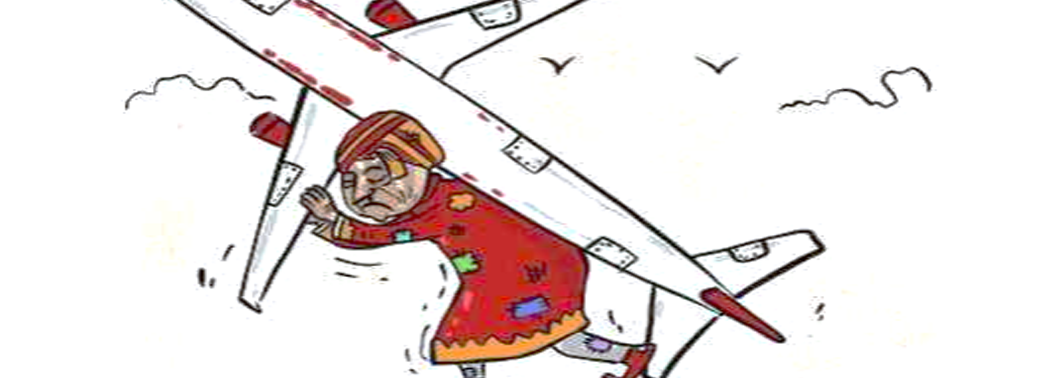
Context:
- Recently, the cabinet approved 100 percent Foreign Direct Investment (FDI) in Air India by foreign entities/NRIs under the automatic route. Earlier, the FDI limit permitted for NRIs was 49 per cent. This is considered to be a major development in the run-up to the Air India sale process, expected to be completed by this year.
Air India:
- It was founded as Tata Airlines (division of Tata Sons Ltd) in 1932 by J R D Tata
- In 1946, it became a Public Ltd Company with the name of Air India
- The government nationalized the carrier in 1953 and passed Air Corporations Act 1953, which provided the monopoly rights to Air India and its associates.
- This act was repealed after a standing committee headed by Pramod Mahajan recommended for it in 1993 and since 1994 the private sector players are allowed to participate in the aviation business
- In 2007 the decision to merge Air India with Indian Airlines to form NACIL (National Aviation Company of India Ltd) was taken.
- The merger is based on the recommendations of Justice Dharmadhikari committee report.
- The objective was to ensure lower administrative costs and other services.
- AI and Indian Airlines had been running profitably till 2005–06.
- It is commented that the merger of Air India with Indian Airlines has created woes due to lack of effective leadership and erroneous government policies.
Reasons for the failure of Air India:
Decision Making:
- Decision making is not quick enough due to the red tapism at different stages and there were various constraints on the operations.
The Rising Fuel Costs:
- The rising fuel costs have led to higher cost of operations which have eaten up the profit margins
Competition:
- The AI has been competing with private sector airlines which are more efficient in terms of ticket pricing, decision making, choosing the right routes, providing value-added services, etc.
AI and Indian Airlines Merger:
- The ill-timed merger was the biggest reason as it led to huge losses
Overstaffing:
- The number of staff/workers is very high compared to industry standards
Failure Gaining Momentum:
- Air India’s precarious financial situation was first made public in June 2009.
- But the government, instead of tackling the core problem of the lack of a strategic and operational direction within the airline, decided to focus on a financial package.
- The bailout package of over Rs.30,000 crore, which is being infused over an eight-year span ending 2021, has not helped Air India evolve into a robust carrier.
- In 2017, NITI Aayog recommended disinvestment but the government, in its wisdom, decided to not only retain 24% equity, it also wanted the acquirer to absorb a major chunk of the non-aircraft related debt.
Present Situation:
- The government has put Air India for disinvestment.
- It is driven by the Centre’s anxiety to get rid of the airline. Thus, it can spare itself of the responsibility of further infusion of funds.
- The reality is that the airline’s survival depends on several factors, most notably
- induction of a professional management with an effective leadership,
- a sound financial package that does not come with political interference in its day-to-day operations,
- trade unions allowing reasonable changes in work conditions and pay packages.
- After a failed attempt at Air India divestment in 2018, the government in January 2020 invited bids again for privatising the airline.
- Learning its lesson from the 2018 failure, the preliminary information memorandum states that 100% stake will be offloaded, unlike 76% offered in the previous attempt.
- However, the new owners would be required to continue to use the “Air India” brand name. The government has also retained a provision that substantial ownership and effective control of the airline must remain with an Indian entity.
Why are There No Buyers?
- The airline’s poor financial situation is what makes it largely unappealing.
- The airline had a debt burden of around ₹48,781 crore as of March 2017, which poses a huge financial risk to a buyer.
- Though the government has offered to transfer some of the debt to a special purpose entity, a buyer will still have to assume responsibility for debt of around Rs.30,000 crore after acquisition – still a significant burden for many.
- Apart from the huge debt burden, Air India has also been losing money for over a decade, with accumulated losses
- A major reason behind its huge losses is the cost of paying interest on its massive debt.
- Some analysts believe that Air India may not be worth anything to its buyers as they are unlikely to obtain any free cash flow after paying money to lenders.
- In fact, they may have to pay money from their own pockets if they assume personal liability for the debt.
100% FDI by NRIs:
- The FDI (foreign direct investment) policy would be amended to allow NRIs who are Indian nationals to own up to 100% of Air India “under automatic route”.
- Besides Air India, the government is also offloading its 100% stake in its low-cost subsidiary, Air India Express (AIXL), and 50% of AISATS, which provides cargo and ground handling services at major Indian airports.
- Apart from reducing the debt of the loss-making airline, the government has made a number of changes in the eligibility criteria for prospective bidders.
- Government had made changes so that the buyer would have to take over debt and liabilities worth Rs 32,986 crore, against around Rs 85,000 crore earlier.
- This means that the prospective buyer would now have to take over only 39% of the total debt and liabilities, unlike 61% in the 2018 bid document.
- The disinvestment of Air India would not just add to the government’s non-tax revenue next fiscal but also stop persistent loss to exchequer. The government has set an ambitious disinvestment target of Rs 2.1 lakh crore for FY21, against a revised Rs 65,000 crore for this fiscal. This part of disinvestment is highly necessary for the government to plug in the fiscal deficit amidst the chaos of slumping economy and a gloomy future in trade due to the Corona outbreak.
ROAD SAFETY IN INDIA
04, Mar 2020

Context:
- The 3rdGlobal Ministerial Conference on Road Safety “Achieving Global Goals 2030” was held February this year, where the conference aimed to chart future strategic directions for global road safety, and define ways to accelerate action on proven strategies.
Road safety in India:
Data on “Road Accidents in India 2018”:
- As per the ‘Road Accidents in India, 2018’ Report, Road accidents in the country have increased marginally by 0.46 % during 2018 compared to 2017.
- The fatalities during the same period have also risen by about 2.37% and 1,51,471 persons were killed in 2018 as against 1,47,913 in 2017.
- Road accident injuries have however shown a decrease of 0.33% in 2018 as compared to 2017.
- As per the report, 62 pedestrians die daily on Indian roads.
- Till 2014, it was 32, a rise of 84% in just four years (2014 to 2018).
- West Bengal tops the list of pedestrian related fatalities with 2618 deaths in 2018.
Significance of Road Safety:
- Road transport is the dominant mode of transport in India, in terms of traffic share and in terms of contribution to the national economy.
- To meet the demand for road transport, the number of vehicles and the length of road network have increased over the years.
- A negative externality of expansion in road network, motorization and urbanization in the country is the increase in road accidents and road crash fatalities.
- Road traffic injuries are one of the leading causes of death, disabilities and hospitalization in the country imposing huge socio-economic costs.
Impact of lack of Road Safety:
- Road accident injuries are the leading causes of deaths and disabilities.
- The age profile of road accidents victims in year 2016 reveals that the productive age group of 18 to 35 years accounts for the high share of 46.3 percent and the age group of 18-45 accounted for a share of 68.6% in the total road accident fatalities.
- India loses 3% of its GDP due to road accidents, most of which are preventable.
Causes of Road Accident:
- Many road accidents are the result of faulty road-design especially a single-lane one with a sharp curve.
- Infrastructural deficits: Pathetic conditions of roads and vehicles, poor visibility and poor road design and engineering – including quality of material and construction.
- Negligence and risks: Over speeding, driving under the influence of alcohol or drugs, tiredness or riding without a helmet, driving without seatbelts.
- Distraction while driving like talking over mobile phones while driving has become a major cause of road accidents.
- Overloading to save cost of transportation.
- Weak Vehicle Safety Standards in India: In 2014, crash tests carried out by the Global New Car Assessment Programme (NCAP) revealed that some of India’s top-selling car models have failed the UN’s frontal impact crash test.
- Lack of awareness among people regarding the importance of safety features like airbags, Anti-lock Braking system etc. Moreover, Vehicle manufacturers do not provide them as standard fitment but only in higher class vehicles reducing their reach.
Steps taken by the Government:
- In 2015 the Indian government announced the application of new regulations consistent with the UN standards for front and side impact and also pedestrian protection.
- For new car models, the use of front and side crash tests came into force from October 2017 and will apply to all new cars from October 2019.
- The pedestrian protection regulation for new models came into force from October 2018 and will apply to all new cars from October 2020.
- In addition, new cars are required to have airbags fitted as standard and to have a speed warning device above 80 km/h.
- KS Radhakrishnan panel on Road Safety
- Supreme Court had set up the three-member KS Radhakrishnan panel on road safety in April 2014.The main recommendation of the committee was
- Ban on the sale of alcohol on highways (both state and national) to restrain drunk driving.
- The states were directed to implement laws on wearing helmets.
- Audit of road safety to be implemented by states to ensure the safety standards in the design, construction, and maintenance of roads.
- The committee stressed the importance of creating awareness among people on road safety rules.
- 3 Year Action Agenda NITI Aayog also highlighted need for Road Safety and set the following Agenda:
- Create Road Safety Boards to reduce accidents. Use data to monitor accidents. We can do this by using data to monitor accidents in real time and use this input to direct efforts towards correction on specific points.
- Standardize reporting of accidents and enhance preparedness through better logistics.
- Provisions to ensure that whenever an emergency situation occurs, the victims are rushed to a nearby medical centre within 10 minutes of the accident.
- Create supporting infrastructure and economic models to support better safety and efficiency.
- India signed the Brasilia declaration and committed to reduction in fatalities.
Brasilia Declaration on Road Safety:
- The declaration was signed at the Second Global High-Level conference on Road Safety held in Brazil.
- Through the Brasilia Declaration Countries plan to achieve the Sustainable Development Goal 3.6: By 2020, halve the number of global deaths and injuries from road traffic accidents.
- United Nations has also declared 2010-2020 as the decade of action for Road Safety.
The Plight of the Pedestrians:
- Despite a weak legal framework, the rights of pedestrians to have encroachment free footpaths and streets and maintenance of the same is still a dream.
- In the landmark Olga Tellis v. Bombay Municipal Corporation casein 1985, the Supreme Court talked extensively (and for the first time) on the rights of pedestrians.
- The same was held true in the recent judgment of Omprakash Gupta and others v. Mumbai Municipal Corporation (2018) by the Mumbai High Court.
- In 2017, Navdeep Asija, a renowned road safety expert, filed a petition in the Punjab and Haryana High Court for the enforcement of ‘right to walk’.
- The petition was based on Article 21 of the Constitution – right to life – arguing that the right to walk was a substantial part of right to life. But the court has not ruled on the petition so far.
- In 2005, the Manmohan Singh government constituted an expert committee under the chairmanship of S Sundar, which studied road safety management pan India.The main recommendation were
- The setting up of an apex body, the “National Road Safety and Traffic Board” having regulatory and advisory powers under the National Road Safety and Traffic Management Act.
- It also suggested the Board be vested with power to issue directives and undertake road safety audits.
- But no action has been taken on the Sundar committee recommendations so far
The Motor Vehicles (Amendment) Act, 2019:
- The Motor Vehicles Act, 1988 is the principal instrument through which road transport is regulated in the country.
- The same has been amended first time in a comprehensive way after thirty years in 2019.
- Road Safety Provisions and Penalties:
- It facilitates electronic monitoring of vehicles for enforcing traffic rules.
- Provision of a refresher training course to obtain the DL after its suspension or revocation for certain offences like over speeding, drunken driving etc.
- Penalties have been introduced for new offences and enhanced for existing offences.
- For offences committed by Juveniles:
- penalty of Rs. 25000 and imprisonment up to 3 years for the owner/guardian.
- Digital intermediaries and aggregators (Ola and Uber) will follow guidelines prescribed by the Centre.
- Constitution of National Road Safety Board to render advice on Road Safety and Traffic Management.
- Citizen facilitation, Transparency and Reduction in Corruption:
- All forms, fees and documents under the Act can be submitted online to avoid human intervention.
- Dealer point registration – for registration of new motor vehicles, the onus to apply for registration has been shifted to dealers and the requirement to produce vehicles before authority has been removed.
- Formulation of National Registers for DLs and registrations to bring transparency.
- Automated testing.
- The validity periods for DLs have been extended.
- DLs can be renewed anytime between 1 year before its expiry till 1 year after its expiry to facilitate citizen away from home, visiting abroad, chronic patients etc.
- Employment Facilitation:
- The requirement of minimum educational qualification for license to drive transport vehicles has been removed.
- Scheme for setting up driving schools with the Central assistance.
- Increased accountability of manufacturers of Motor Vehicles
- Centre can order recall of motor vehicles for any defect.
- Insurance and Compensation
- Constitution of Motor Vehicle Accident Fund.
- compensation for hit and run cases.
- Cashless treatment of road accident victims during golden hour.
- Drivers and Co-driver/helper have been included as third parties, for the purpose of insurance.
- Behavioral Changes:
- Increasing the motorcycle helmet, seat-belt usage and increasing child restraint use.
- Awareness regarding the influence of alcohol on driving.
- Post Crash response and Effective Trauma Care:
- Simple and affordable post-crash care interventions can save lives. Effective care for the injured requires timely care at the scene, prompt transport to appropriate emergency and surgical care at the hospital, and early access to rehabilitation services.
- Safe Roads:
- Safety consideration during the planning, design, and operation of roads, can contribute to reducing road traffic deaths and injuries.
- Vehicular Safety Standards:
- Vehicle safety features such as electronic stability control, effective Car Crash Standards and advanced braking should be made mandatory.
- Awareness and Publicity:
- Mass media and social media should be used effectively for spreading awareness about road safety.
- Training and Capacity Building:
- Training courses and training workshops shall be organized for building capacity in road safety audits and road safety engineering.
PUSHING THE WRONG ENERGY BUTTONS
04, Mar 2020
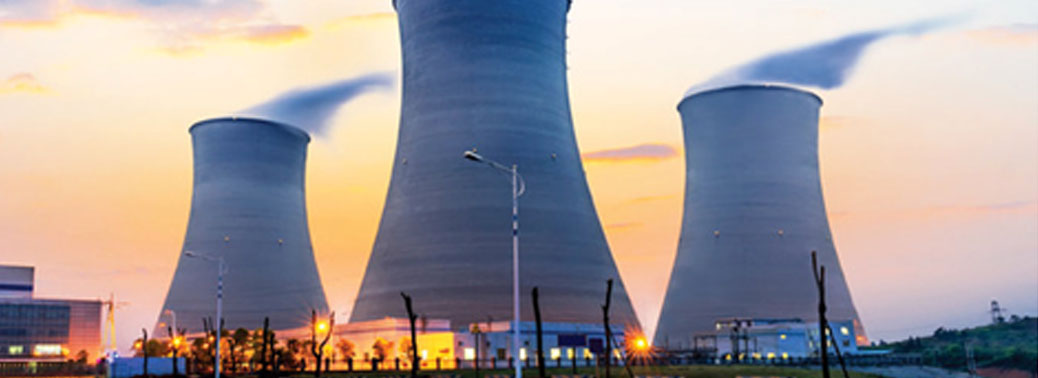
Context:
- In the backdrop of the recent visit of the US President to India, the joint statement highlighted the setting of up of 6 nuclear reactors at Kovvada, AP by Westinghouse.
- This article flags some of the issues with respect to the deal setting up nuclear reactors.
Background:
- In March 2019, India and USA agreed to set up the long-pending 6 nuclear reactors in Kovvada, Andhra Pradesh.
- Under the agreement, the US Company Westinghouse Electric will sell 6 AP-1000 nuclear reactors to India.
- AP-1000 reactors are light water reactors where fuel used is U-235. Ordinary water acts as both coolant and moderator.
- The Westinghouse electric will supply the nuclear reactor technology and NPCIL will be responsible for construction and operation of the plant.
Problems Associated with these Projects:
1. High Cost
- Electricity from American reactors would be more expensive than competing sources of energy.
- According to estimates the first year tariff for electricity from nuclear reactors is about Rs. 25 per unit. In comparison the wind and solar energy costs have declined by around 70% to 90% in the last 10 years and are estimated to be around Rs.3/unit.
2. Safety and Civil Liability
- Given the experience of Chernobyl and Fukushima nuclear reactors are prone to serious accidents.
- In this context the operator of the reactor would be responsible for compensation and not the supplier. This is true after India ratified the Convention of Supplementary Compensation for Nuclear Damage in 2015.
3. Past Experiences
- The past experience of setting up imported reactors such as Tarapur reactors in Maharashtra and Kudankulam reactors in Tamil Nadu has been poor as they have faced repeated shut downs.
- For instanceTarapur reactors and Kudankulam reactors produced just 32% and 38%, respectively, of their capacity in 2018-19.
India’s Civil Nuclear Cooperation – In Brief
- In the aftermath of 1998 Pokhran Test India faced a nuclear isolation across the world.
- This changed after the 2005 Indo-US Civil Nuclear Agreement.
- In addition India also signed an agreement with IAEA in 2009 to place its civil nuclear facilities under IAEA safeguards. (IAEA Additional Protocols)
- This paved the way for US companies to engage in nuclear commerce with India.
- However despite the Indo-US nuclear deal, the nuclear liability regime in India was seen as hurdle for foreign companies to invest in India’s nuclear sector.
- The major hurdle for companies to do nuclear commerce with India was the Civil Liability for Nuclear Damage Act, 2010 (CLINDA) which held the suppliers of nuclear power projects liable in case of nuclear accidents.
Ratification of CSC:
- This was solved in 2016 when India ratified the Convention of Supplementary Compensation.
- This marked India’s willingness to accede to international nuclear liability regime which holds the operator liable to pay up for damage in case of nuclear accidents. (However it provides for operator to have the right to recourse with the supplier in the contract)
- Besides India has also launched an insurance pool with a liability cap of ₹ 1,500 crore to cover the suppliers’ risk of potential liability.
- As a result of this, foreign companies have showed interest in nuclear commerce with India.
- Accordingly India has signed civil nuclear agreements with 14 countries including USA, France, Russia, Canada, Argentina, Australia, Sri Lanka, the UK, Japan, Vietnam, Bangladesh, Kazakhstan, South Korea and Czech Republic.
DEDICATED FREIGHT CORRIDOR
22, Feb 2020

Why in News?
- The World Bank has offered to give financial assistance to the last remaining portion of the Eastern Dedicated Freight Corridor (EDFC) between Sonnagar (Bihar) and Dankuni (West Bengal),
- India has originally slated to construct this in the private public-private partnership (PPP) mode. As of now, the entire EDFC is being built with loan from World Bank, except for the last portion between Bihar and West Bengal.
About Eastern Dedicated Freight Corridor (EDFC):
- The Eastern Dedicated Freight Corridor (EDFC) with a route length of 1856 km runs from Dankuni in West Bengal to Ludhiana (Punjab).
- It covers Punjab, Haryana, Uttar Pradesh, Bihar, Jharkhand and West Bengal.
- The railway is one of the multiple freight corridors.
Two components from EDFC:
- First component is to provide additional rail transport capacity, improved service quality and higher freight throughput.
- The second component is institutional development to assist DFCCIL and Ministry of Railways (MOR) to develop their capabilities to best utilize heavy haul freight systems.
About Western Dedicated Freight Corridor:
- The 1,504-km western freight corridor begins at Dadri in Uttar Pradesh and stretches till the country’s largest container port — Jawaharlal Nehru Port Trust, near Mumbai — passing through Uttar Pradesh, Haryana, Rajasthan, Gujarat and Maharashtra.]
About Dedicated Freight Corridor Corporation of India Ltd. (DFCCIL):
- DFCCIL under the Ministry of Railways is a special purpose vehicle tasked with planning and completion of 3,306 kms of Dedicated Freight Corridors (DFCs), consisting of western freight corridor and eastern freight corridor (1,856 kms).
- The construction of DFCs project would enable the decongestion of existing over-saturated paths which, thereby, will effectively improve punctuality of Passenger Trains.
THE AIRCRAFT (AMENDMENT) BILL, 2020
08, Feb 2020

Context:
- Recently, the Union Government introduced a bill in the Lok Sabha to amend the Aircraft Act, 1934. This Act pertains to control of the manufacture, possession, use, operation, sale, import and export of aircraft.
Key facts:
- According to the proposed amendment, the fine amount for violations will be hiked from Rs 10 lakh to up to Rs 1 crore.
- The bill also provides for keeping “aircraft belonging to any armed forces of the Union, other than naval, from military or air force outside the purview” of the Aircraft Act, 1934.
- The bill proposes that, the government would also have the power to issue directions to review, if necessary in public interest, any order passed by Directorate General of Civil Aviation (DGCA), Bureau of Civil Aviation Security (BCAS) and Aircraft Accidents Investigation Bureau, as per the bill’s Statement of Objects and Reasons.
- The proposed amendments would fulfil the safety requirements of the International Civil Aviation Organisation (ICAO).
- Other proposals include empowering BCAS or any authorised officer to issue directions, having designated officers for adjudging penalties and introducing a provision for compounding of offences.
Why the New Amendment?
- Spike in the number of air safety violations or breaches in the Recent Past:
- Recently, Airbus A320neo planes fitted with Pratt and Whitney engines, could have had catastrophic consequences as many such aircraft have faced mid-air glitches.
- DGCA had asked IndiGo and Go Air, who still use this version of the aircraft, to install modified engines or replace the entire fleet of such planes
- There have also been many reports of planes facing other technical snags and could ultimately result in creating a sense of fear among passengers.
- Creating an Enabling Environment:
- The bill seeks to empower the central government to constitute DGCA, BCAS and AAIB under the Act as well as specify their responsibilities.
- It would also bring regulations of all areas of air navigation services under the Act.
- This bill would enable the three regulatory bodies in the civil aviation sector in India, namely DGCA, BCAS and AAIB to become more effective.
- Adopting the International Standards:
- The bill has provisions for securing the safety of aircraft operations in India and carrying out civil aviation operations as per standards, procedures and practices laid down by ICAO.
- As per the statement of ICAO audits, conducted in 2012 and 2015, have indicated a need to amend the Act to give proper recognition to the regulators under the Act.
- The amendments would fulfil the requirements of ICAO.
Indian Civil Aviation Sector:
- Indian civil aviation sector has a high growth potential and at present, scheduled domestic carriers together have nearly 680 planes.
- The Economic Survey 2019-20, pointed out that, to continue with the high growth trajectory, the government has been providing a congenial environment so that the Indian carriers double their fleet from about 680 aircraft at the close of November 2019 to over 1,200 by FY 2023-24.
- ICAO had carried out the Universal Safety Oversight Audit Programme for India in November 2017 and in February 2018. The audit result showed that the country’s score declined to 57.44% from 65.82% earlier, placing India below Pakistan and Nepal.
- An ICAO team had visited India in November 2018 as well, and assessed the action taken on issues related to three areas that were audited by the ICAO in November 2015. Those pertained to aerodromes and ground aids, air navigation services (ANS) and aircraft accident and incident investigation.
- Currently, India’s score is lower than the world average of 65% on the ICAO’s board.
PRIVATE TRAINS IN INDIA
31, Jan 2020

Context:
- NITI Aayog and Indian Railways have come out with a discussion paper for running 150 trains on 100 routes by private operators. The recommendations of the high powered committee envisaging an investment of 22500 crore rupees have been put in public domain for stakeholder consultations.
- The 100 identified routes which include Mumbai Central – New Delhi , Patna – New Delhi , Howrah- Chennai and Lucknow- Jammu Tawi etc. have been split into 10-12 clusters.
- As per the report the private operator will have the right to collect market linked fares and will be provided flexibility of class composition and halts.
- The aim for this overhaul is said to ensure world class service experience to passengers, reduce supply demand deficit and introduce modern technology
Advantages of Privatisation of Railways:
- Improved Infrastructure:Privatisation will lead to better infrastructure which in turn would result in improved amenities for Travellers.
- Normalization of prices due to the competition: when private players are allowed to enter the sector would foster competition and hence lead to overall betterment in the quality of services in line with the costs and prices.
- Improved Security:Private participation can lead to better accountability and monitoring, which can keep a check on rising accidents in railways.
- Better Technological Innovation:Private participation can lead to the infusion of modern technology and capacity building of Indian railways.
Disadvantages of Privatisation of Indian Railways:
- Limited Coverage:Privatisation of railways would mean the railways will become a profit-making enterprise, this would lead to the elimination of railways routes that are less popular.
- This can have a negative impact on connectivity and further increase the rural-urban divide.
- Lesser Inclusive:Hike in fares can render the railways out of reach for lower-income groups.
- Issue of Accountability:The whole railway system cannot be handled by a single party or coordination will be very difficult if area wise given to private parties, which may lead to accountability issues.
- Impact on the Economy:Indian Railways is the backbone of India, it provides low fare transportation to agricultural and industrial trade. Therefore, privatisation of Indian railways shall definitely affect the Indian economy at large.
Challenges:
- Absence of Independent Regulator in the railway sector:In the absence there are chances of litigation or other issues as cropped up in the road sector.
- No Past Experiencein the PPP model for the implementation of projects for railways.
- Accountability:Private companies are unpredictable in their dealings and do not share their governance secrets with the world at large. In such a scenario it would be difficult to pin the accountability on a particular entity.
- The existing Railway workers would be affected and may lead to severe job losses.
Recommendations of the Bibek Debroy Committee:
- Transition to Commercial Accounting:The financial statements of Indian Railways need to be redrawn, in accordance with principles and norms nationally and internationally accepted.
- The non-core function of railways must be privatized:These activities include running hospitals and schools, catering, real estate development, including housing, construction and maintenance of infrastructure, manufacturing locomotives, coaches, wagons and their parts.
- Expansion of Indian Railways Manufacturing Company:Wagons are already produced by the private sector. Coaches and locomotives could follow.
- Encouraging Private Entry:Private entry into running both freight and passenger trains in competition with Indian railways should be allowed and private participation.
- Independent Regulator: Shift regulatory responsibility from the government to an independent regulator as the private sector will only come in if there is fair and open access to Railway Infrastructure.
AIR INDIA DISINVESTMENT
29, Jan 2020

Why in News?
- The Government has kicked off the complete disinvestment process of Air India for the second time after it failed to receive a single bid in the first attempt back in 2018.
100% Stake Sale:
- Most significantly, the government will offload 100% of its stake in Air India, compared with 76% put on the block last time.
- The government holding even a minor stake in the airline post disinvestment was seen as a huge negative for any potential buyers.
- The buyer will have to take on Rs 23,286 crore of debt out of a total Rs 60,074 crore.
- Compared with this, in the last attempt, a potential buyer would have to take on Rs 33,392 crore of debt and current liabilities.
- The amount of debt being bundled with the airline in this attempt is towards the aircraft that are being sold off along with the carrier as part of the transaction.
- The working capital and other non-aircraft debt will be retained by the Government.
Employees:
- All present employees of Air India totalling as many as 9,617 permanent employees, including pilots and cabin crew, will go to the new buyer.
- The buyer should retain these employees for a certain lock-in period, which would be divulged in the share Purchasing Agreement. The government is exploring different modalities to ensure that the retired staff members have a Medical Cover.
Eligibility:
- Any private or public limited company, a corporate body and a fund with a net value of ₹3,500 crores will be eligible to bid.
- The present offer involves a clean exit by the government and complete transfer to the private player. This would ensure the private players enough freedom to run the state of affairs in the company without many regulations.
- The bid document also states that the existing FDI policy, which allows a foreign airline to buy up to 49% in Air India, will continue to apply.
Air India’s Assets:
- The new owner will be taking on a fleet of 121 aircraft in Air India’s fleet and 25 planes in Air India Express’ fleet.
- These exclude the four Boeing 747-400 Jumbojet aircraft that the airline plans to transfer to its subsidiary Alliance Air, which is not a part of the current transaction.
- However, like the last attempt, the properties currently in use by Air India, including the Nariman Point building and the company’s headquarters near Connaught Place in New Delhi will be retained by the government.
Pro’s of Air India:
- Air India has a 50.64% market share in international traffic among Indian carriers.
- The government is hopeful of attracting investors with the new sale criteria, coupled with the main benefits of the airline, which are prime slots in capacity-constrained airports across the world.
- However, any potential investor is also expected to look at the size of the airline’s operations with reference to what those operations generate.
- For example, both Air India and Singapore Airlines operate with a fleet of 121 aircraft, but in 2018-19 Air India posted a net loss of Rs 8,556 crore, whereas Singapore Airlines reported a net profit of Singapore $ 779.1 million (Approx Rs 4,100 crore).
THE AVIATION TROUBLE
28, Jan 2020
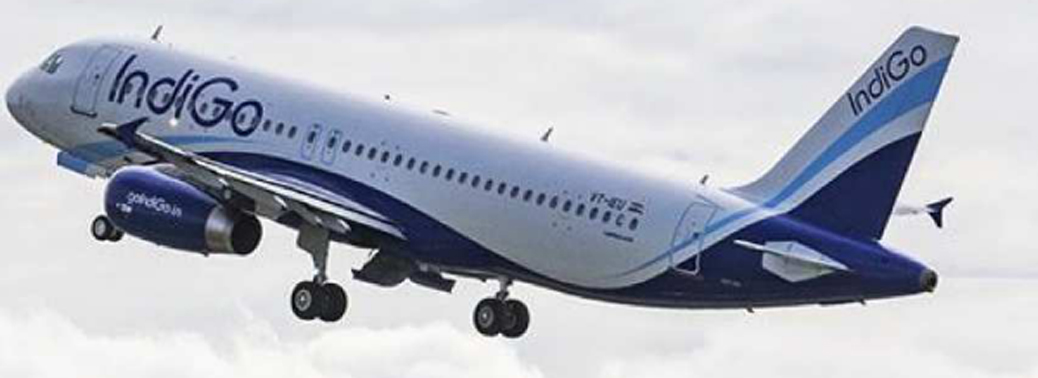
Context:
- Indian aviation industry is staring at a fresh crisis. Recently, low-cost carrier GoAir temporarily suspended some flights, as its A320neo planes are Facing Frequent Snags.
The on-going Crisis:
- The issue in the A320neo class planes had led to several groundings last year and this year.
- The Directorate General of Civil Aviation (DGCA) pressed the airlines to fix the issues soon.
- Both the engine manufacturer Pratt and Whitney and aircraft maker Airbus SE expressed their inability to deliver engines and aircraft on time, which means Go Air has no option but to truncate its operating fleet of planes.
- The problem is not confined to the short term.
- As many as 15% of passenger planes in India could be affected due to this, as leading airlines like Indigo, GoAir and SpiceJet have the same issue.
- Aviation experts say that frequent snags in Pratt and Whitney engines may not have easy and immediate fixes. Which means the problem is not likely to go away any time soon.
The Issues Plaguing Aviation Sector in India:
- Increase in Fuel Prices:
- Aviation turbine fuel (ATF) is one of the important sections of the industry.
- The Centre and the states pile on their taxes on ATF, which can go as high as 29%.
- ATF charges are vulnerable to currency movements and leads to high operating expenses—some 40% compared to 20% for Foreign Carriers.
- Rupee Depreciation:
- The rupee’s depreciation is hitting carriers hard as it did a few years ago.
- About 25-30% of their costs, excluding fuel, are dollar denominated—from aircraft lease rents and maintenance costs to ground handling and parking charges abroad.
- Excessive parking and Landing Charges:
- High Airport (aeronautical) Charges levied by Airport Authority of India.
- These charges payable at the International Airports are higher than those payable at the airports designated as Domestic Airports.
- As a result, the domestic airlines in India are incurring additional costs at the international designated airports without deriving any Extra Facilities.
- Fare Wars:
- Established Airlines are threatened by low cost carriers, which are eating up their market share.
- In order to consolidate their market share, top premium airlines were forced to reduce their ticket fares to around 15- 20 per cent, which reduces their profitability.
- Loads of Debt:
- Poor operational efficiency, steady losses in the wake of higher fuel costs and a weaker rupee leads to non-payment of debts.
- No airline company has been able to devise a credible currency policy to protect them against Sharp Currency Movements.
- Lack of Managerial Expertise:
- Indian aviation sector is struggling due to lack of managerial expert and expertise in the sector and lack of a regulator to Monitor the Industry
- Government policies limitations:
- The National civil aviation policy (NCAP) 2016’s regional connectivity scheme imposes ticket price caps, which also makes the airliners fly their aircrafts in Unprofitable Routes.
The International Civil Aviation Organization (ICAO):
- ICAO is a UN specialized agency, established by States in 1944 to manage the administration and governance of the Convention on International Civil Aviation (Chicago Convention).
Functions of ICAO:
- ICAO works with the Convention’s 193 Member States and industry groups to reach consensus on international civil aviation Standards Recommended Practices (SARPs) and policies.
- It supports creating a safe, efficient, secure, economically sustainable and environmentally responsible civil aviation sector.
- ICAO also coordinates assistance and capacity building for States in support of Numerous Aviation Development Objectives.
- It produces global plans to coordinate multilateral strategic progress for safety and air navigation.
- Monitors and audits States’ civil aviation oversight capabilities in the areas of safety and security.
Chicago Convention:
- Convention on International Civil Aviation (also known as Chicago Convention), was signed in 1944 by 52 States.
- ICAO came into being in 1947.
- In the same year, ICAO became a specialized agency of the United Nations linked to Economic and Social Council (ECOSOC).
- The Convention establishes rules of airspace, aircraft registration and safety, and details the rights of the signatories in relation to air travel.
- The Convention also exempts air fuels in transit from (Double) Taxation.
INTEGRATED ROAD ACCIDENT DATABASE (IRAD)
18, Jan 2020
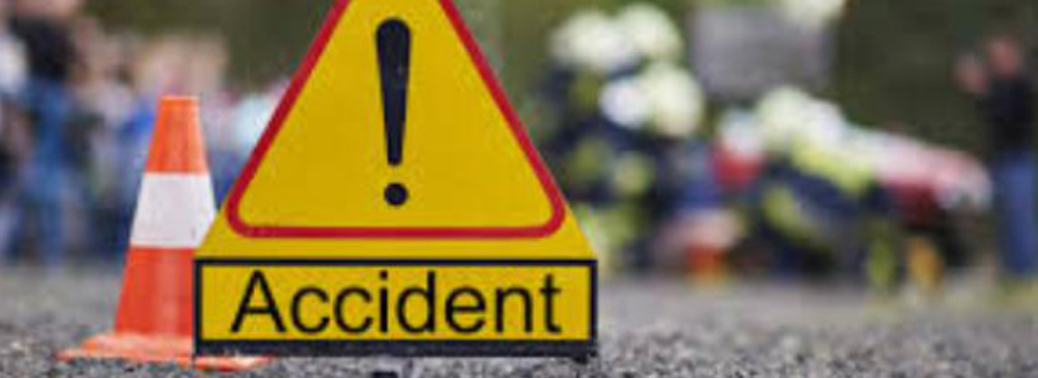
Why in News?
- Recently, the government has launched a Central Accident Database Management System.
About Integrated Road Accident Database (IRAD):
- It has been developed by the Indian Institute of Technology-Madras (IIT-M) and will be implemented by the National Informatics Centre and is being supported by the World Bank.
- It will be first piloted in the six States with highest fatalities from road crashes of Karnataka, Madhya Pradesh, Maharashtra, Rajasthan, Tamil Nadu and Uttar Pradesh.
- It is comprehensive web-based Information Technology (IT) solution and will enable various agencies such as the police, Public Works Department (PWDs), etc. to enter details on a road accident from different perspectives such as investigation, road engineering, vehicle condition etc.
Working of IRAD:
- It will enable police personnel to enter details about a road accident, along with photos and videos, following which a unique ID will be created for the incident.
- Subsequently, an engineer from the Public Works Department or the local body will receive an alert on his mobile device. He or she will then visit the accident site, examine it, and feed the required details, such as the road design.
- The Data thus collected will be analysed by a team at IIT-M, which will then suggest if corrective measures in road design need to be taken.
- Road users will also be able to upload data on road accidents on a separate mobile application.
Road Accidents in India:
- According to the World Road Statistics, India recorded the highest number of road accident deaths across 199 countries in 2018 followed by China and the US.
- According to Government Data, more than 1.5 lakh people lost their lives in road crashes in the country in 2018.
- Of the total people killed in road crashes in 2018, 48% were between 18 years and 35 years old, and more than 60% of such fatalities were due to over speeding.
National Informatics Centre:
- NIC of the Ministry of Electronics and Information Technology provides network backbone and e-Governance support to the Central Government, State Governments and UT Administrations.
- It was established in 1976 and is located in New Delhi.

YEAR END REVIEW 2019 – MINISTRY OF ROAD TRANSPORT & HIGHWAYS
02, Jan 2020
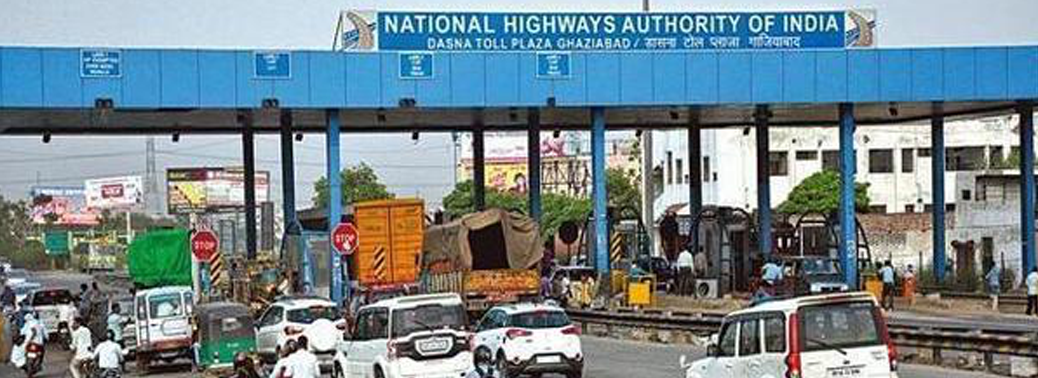
Major initiatives of the Ministry of Road Transport & Highways in 2019:
National Electronic Toll Collection (NETC) program:
- The Ministry of Road Transport and Highways has launched the National Electronic Toll Collection (NETC) program which provides for the collection of user fee through FASTags based on RFID technology.
- In order to save fuel, time and pollution and to ensure seamless movement of traffic, it has been decided to enable all lanes in Fee Plazas for electronic toll collection program through FASTags.
- The Ministry is trying to bring inter-operability of the FASTags with the State Governments so that a single FASTag can be used both at State Highways Toll Plaza and National Highways Toll Plaza.
- An NHAI Prepaid Wallet was also launched giving customers the choice of not linking their FASTags to their bank accounts and includes the feature of UPI recharge.
State Support Programme:
- A State Support Programme aimed at incentivising the states to improve their road safety performance is proposed to be launched to reduce the overall fatalities by road accidents by 25% by 2024.
- With a view to accurately recording the accident details so that timely corrective action is undertaken a geo-tagged accident data collection programme would be launched under the project “Integrated Road Accident Database (IRAD)”.
The Motor Vehicles (Amendment) Act, 2019:
- The Motor Vehicles Act, 1988 is the principal instrument through which road transport is regulated in the country.
- The same has been amended for the first time in a comprehensive way after thirty years by the Motor Vehicles (Amendment) Act, 2019, passed by the Parliament and published in the Gazette of India in August 2019.
- The Act will bring reforms in the area of road safety, bring citizen facilitation, transparency, and reduce corruption with the help of information technology and removing intermediaries.
- The Act will strengthen public transport, safeguard and protect Good Samaritan and reform the insurance and compensation regime.
- It will allow innovation and new technologies such as driverless vehicles, to be tested in a live environment and increase efficiency in research.
- The Act will facilitate physically handicapped people by allowing motor vehicles to be converted to adapted vehicles with post-facto approval and facilitating licence to drive adapted vehicles.
- The provisions of compensation and post-accident treatment have been amended and measures will be taken to provide cashless treatment for accident victims.
NO PARKING, NO CAR: NATIONAL GREET TRIBUNAL
26, Dec 2019
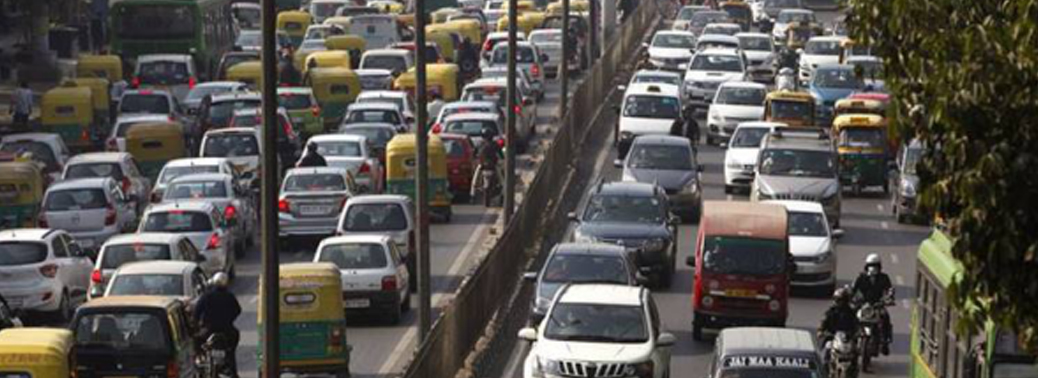
Context:
- The National Green Tribunal asked the authorities of 122 cities (which lack ambient air quality), including Delhi, to curtail registration of vehicles if they do not have adequate parking space. And instead, the NGT asked the authorities to, upgrade the Public Transport System.
What is the Issue?
- Two major factors that will hinder development in urban areas are
1.The lack of available public and Private Parking
2.The lack of a Robust Transit System.
- While many of the urban cities in India have been performing better in the latter, they lack proper private or public parking facilities. Improper parking leads to congestion, which results in air pollution.
- The NGT, concerned over the growing air pollution in India, had said, the environment protection measures require – the number of vehicles in any city must be limited to the available parking space.
The Tribunal’s Directions:
- Parking can be allowed only at designated places.
- Stringent measures must be taken by statutory authorities including the traffic police against any such parking.
- The transport departments of the states and the Union territories, must assess the available parking capacities in their cities and determine the number of vehicles that can be accommodated in these available parking space.
- In case, if the number of vehicles had exceeded the capacity, there should be an action plan for providing adequate additional parking space.
- The number of vehicles to be registered must be curtailed by using appropriate economic disincentives or otherwise, if the number of vehicles had exceeded the capacity.
- There should be an alternative provided to the citizens in the form of a public transport system.
- Concerned over the threat posed to limited natural resources due to their overuse, the NGT had directed for assessment of carrying capacityof 122 cities, including Delhi, where air quality does not meet the National Ambient Air Quality Standards.
What is Carrying Capacity?
- The concept of “carrying capacity” addresses the question as to how many people can be permitted into any area without the risk of degrading the environment In case of urban cities, the carrying capacity is largely determined by the level of economic activity carried out by the residents of the city.
The Issue of Parking Capacity:
- The NGT has directed the states and the Union territories, to assess the available parking capacities in their cities and determine the number of vehicles that can be accommodated in these available parking space.
1.Indian cities often lack in discipline of vehicle parking, leading to congestion, which results in pollution.
2.In Indian urban spaces, there is no clear regulation regarding parking spaces.
3.The safety of bicyclers and pedestrians is also affected due to unavailability of parking spaces.
4.Delhi’s parking woes – Though the public transport in Delhi is far better than other cities, the aim of last mile connectivity is still unachieved. The vehicles from the neighbouring states, also occupy the streets of Delhi leading to congestion.
Denying Registration of New Vehicles:
- The NGT has ruled that, the number of vehicles to be registered must be curtailed by using appropriate economic disincentives or otherwise, if the number of vehicles had exceeded the capacity.
1.This can hurt the movement of urban citizens, who rely on private mode of transportation.
2.This is only a temporary fix, as the issue of construction and demolition waste has not been addressed.
3.This would also affect the automobile sector, which is already reeling under pressure due to Unfavourable Market.
- Preventing the urban people from buying new vehicles, without improving the parking space, may lead to chaos in the urban areas.
Solution to the Parking Problems:
- Indian cities should move toward more organised parking management systems. This would not only reduce the congestion, but also increase the effectiveness of the Public Transport Systems.
- Increased Parking Fees for parking in public spaces
- Increase On-Street Parking facilities.
- On-Street Angled Parking – increases the space availability.
- Remote Parking and Shuttle Service – feeder facility.
- GPS Tracking on Buses – to make the public transport reliable.
- Parking Database – for better planning.
- Informal Markets for Off -Street Parking.
- Parking Spaces Sales and leasing.
- Financial Incentives for using public transit.
- Advanced Parking Management Systems.
- On Demand Parking Mobile Apps.
- Transferable Parking Rights.
- Temporary Parking Structures.
- By integrating the parking database with the urban transit systems, these cities can fill the gaps in their last mile connectivity. The tribunal had made it clear that the adverse impact on public health and constitutional mandate that right to clean air is a fundamental right cannot be violated for long.
Background:
1. National Clean Air Programme
- It was envisioned as a scheme to provide the States and the Centre with a framework to combat air pollution.
- The intention is to cut the concentration of PM10 and PM2.5 by at least 20% in the next five years, with 2017 as the base yearfor comparison.
- Which cities will Fall Under This?
- Based on the reports by WHO and the air quality data obtained, 122 citieshave been chosen as Non-Attainment Cities.
- Who All Will Participate?
- Industry and academia, Ministry of Road Transport and Highways, Ministry of Petroleum and Natural Gas, Ministry of New and Renewable Energy, Ministry of Heavy Industry, Ministry of Housing and Urban Affairs, Ministry of Agriculture, Ministry of Health, NITI Aayog, and Central Pollution Control Board.
2. National Air Quality Index (AQI):
- Based on ‘One Number- One Colour-One Description’.
- There are six AQI categories, namely Good, Satisfactory, Moderately polluted, Poor, Very Poor, and Severe.
- The index will measure eight major pollutants, namely, particulate matter (PM 10 and PM 2.5), nitrogen dioxide, sulphur dioxide, ozone, carbon monoxide, ammonia and lead.
- The simplicity of the NAQI also makes it accessible to the common man.
- The use of the colour coded system makes is easier for people to comprehend instantly.
3. Ambient Air Quality Standards in India
- Ambient air quality refers to the condition or quality of air surrounding us in the outdoors.
- National Ambient Air Quality Standards are the standards for ambient air quality set by the Central Pollution Control Board (CPCB) that is applicable nationwide.
- The CPCB has been conferred this power by the Air (Prevention and Control of Pollution) Act, 1981.
- Government of India has laid down National Ambient Air Quality standards
- (NAAQS)for twelve air pollutants, namely, PM10, PM2.5, Carbon Monoxide (CO), Sulphur Dioxide (SO2), Nitrogen Dioxide (NO2), Ammonia (NH3), ground level Ozone (O3), Lead, Arsenic, Nickel, Benzene and Benzo Pyrene.
SILVER LINE RAILWAY PROJECT
20, Dec 2019

Why in News?
The Ministry of Railways granted in-principle approval for the ‘Silver Line’ project, a proposal of the Kerala government that involves laying of semi high-speed trains between the two corners of the state of Kerala.
The Silver Line project:
- The Silver Line project aims to connect major districts and towns with semi high-speed trains that will run on their own tracks.
- The 532-km corridor is projected to be built at a cost of Rs 56,443 crore. Trains would complete the journey at four hours instead of 12, with a maximum speed of 200 km/h.
- The corridor will be built away from the existing line between Thiruvananthapuram and Thrissur.
- The semi high-speed trains will traverse through 11 of the state’s 14 districts, Alappuzha, Wayanad and Idukki being the exceptions.
- There are also plans to connect the corridor with the international airports at Kochi and Thiruvananthapuram. The project is scheduled to be commissioned by 2024.

Significance:
- Kerala’s road networks are clogged and experience dense traffic during peak hours.
- According to a data, less than 10% of the state’s roads handle nearly 80% of the traffic.
- This also gives rise to accidents and casualties; in 2018, Kerala recorded 4,259 deaths and 31,687 grievous injuries.
- Experts have been demanding faster transportation options including railways and waterways
- The current railway network is congested with a large number of trains, level crossings and sharp curves.
- The project will result in direct and indirect employment opportunities for 50,000 people, and the project once completed would create direct employment for at least 11,000 people.
Implementation:
- The Kerala Rail Development Corporation (K-Rail), a joint venture between the Ministry of Railways and the Kerala government to execute projects on a cost-sharing basis, will be the nodal agency.
- The government is believed to be looking at external funding agencies.
- An initial investment is likely to be made by K-Rail for acquiring land. A Detailed Project Report (DPR) will be commissioned soon.
INFRASTRUCTURE INVESTMENT TRUST (INVIT)
13, Dec 2019
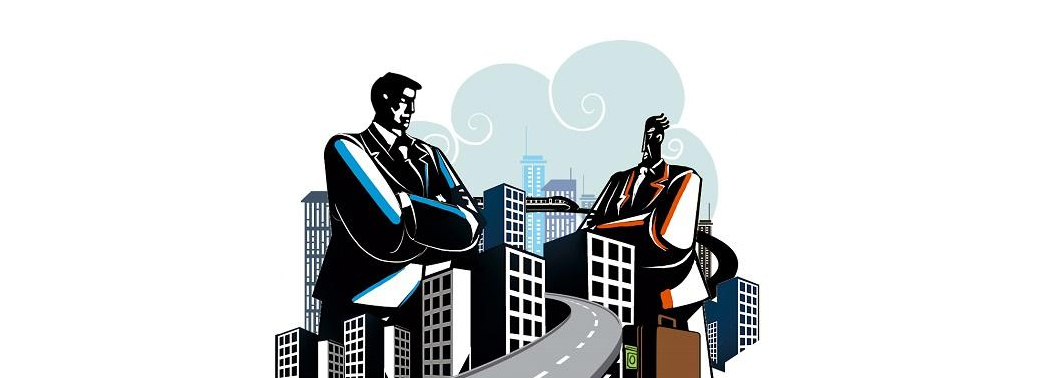
Why in News?
- Recently, Cabinet authorises NHAI to set up Infrastructure Investment Trust
About InvIT:
- It will be established as a Trust, named as ‘InvIT Trust’.
- It will be set up under Indian Trust Act, 1882 and Securities and Exchange Board of India (Infrastructure Investment Trusts) Regulations, 2014.
Objective:
- It will be formed with an objective of investment primarily in infrastructure projects as defined by Union Ministry of Finance and may hold assets either directly or through a Special Purpose Vehicles (SPV) or a holding.
- Retail domestic savings and corpus of special institutions such as mutual funds, Pension Fund Regulatory and Development Authority (PFRDA), among others, will be invested in infrastructure sector through InvIT.
- It would attract patient capital for about 20-30 years to Indian highway market, as investors are unwilling towards construction risk and are interested in investment in assets which provide long-term stable returns.It will enable the NHAI to monetize completed national highways that have a toll collection track record of at least one year and the NHAI reserves the right to levy toll on the identified highway.
About NHAI:
- The National Highways Authority of India was constituted by an act of Parliament, the National Highways Authority of India Act,1988.
- It is responsible for the development, maintenance and management of National Highways entrusted to it and for matters connected or incidental thereto.
- Given the magnitude of the Bharatmala, the government’s flagship highway development program, NHAI would need adequate funds to complete the projects within the prescribed Timelines.
PALESTINE-INDIA TECHNO PARK
09, Dec 2019

Why in News?
- The Representative of India to Palestine released third tranche of funding, worth $3 million, for the construction of a Palestine-India Techno Park.
The Palestine-India Techno Park:
- The techno park is meant to create a national business environment and culture “that will enable knowledge-based and creative enterprises as well as technology clusters to successfully operate locally, regionally and globally”.
- In 2017, the park became a member of the International Association of Science Parks and Areas of Innovation (IASP), a global network of science and technology parks.
- Its objectives include establishing an environment that is accessible to industry, supporting the process of commercialisation and industrialisation, supporting entrepreneurship and bridging the knowledge gap between the private sector and academia.
Indian investment in Palestine:
- In total, India has made a commitment of investing over $12 million, part of India’s broader framework of capacity building in Palestine.
- The Indian government pays $3 million on a half-yearly basis.
- Trade between India and Palestine stands at roughly US $40 million and spans automotive spare parts, medical tourism, agro-products, textiles, agro-chemicals and pharmaceuticals among others.
- India’s investment towards the park is part of India’s support to the Palestinian cause.
India, Palestine & Israel:
- Historically, India’s ties with Israel and Palestine have been more or less balanced. India fully established diplomatic relations with Israel in 1992.
- Defence and agriculture have formed the main pillars of their relationship.
- In 1974, India became the first non-Arab state to recognise the Palestine Liberation Organisation (PLO) as the sole legitimate representative of the Palestinian people.
- In 1938, while expressing sympathies for the persecution of Jews in Germany, Mahatma Gandhi said, “Palestine belongs to the Arabs in the same sense that England belongs to the English or France to the French”.
- In 1988, India was one of the first countries to recognise the state of Palestine after the Palestinian National Congress declared independence.
- At that time, India maintained its support for the two-state solution and championed a “sovereign, independent, united” Palestine with its capital in East Jerusalem.
- In 1996, India opened its Representative Office to the State of Palestine in Gaza, which was shifted to Ramallah in 2003.
- In July 2017, PM Modi became the first Indian Prime Minister to visit Palestine.
PEDESTRIAN DEATHS IN ROAD ACCIDENTS
04, Dec 2019

Why in News?
- The Ministry of Road Transport & Highways has formulated a multi-pronged strategy to address the issue of road safety based on Education, Engineering (both of roads and vehicles), Enforcement and Emergency Care.
Highlights:
- The Ministry of Road Transport & Highways has constituted a Parliamentary Constituency Committee on Road Safety in each district of the country to promote awareness amongst road users under the chairmanship of the MPs.
- The National Road Safety Policy outlines various policy measures such as promoting awareness, establishing road safety information database, encouraging safer road infrastructure including the application of intelligent transport, enforcement of safety laws with regard to road safety.
- The Motor Vehicles (Amendment) Act, 2019 focuses on road safety and includes, among other things, stiff hike in penalties for traffic violations and electronic monitoring of the same, enhanced penalties for juvenile driving, computerization/automation of vehicle fitness and driving, tests, recall of defective vehicles, extending the scope of third party liability and payment of increased compensation for hit and run cases, etc.
Some of the other Initiatives of the Government:
- Advocacy/Publicity campaign on road safety through the electronic media and print media to create awareness.
- Issue of Guidelines for the protection of Good Samaritans.
- Setting up of model driving training Institutes in States.
- Launch of mobile app for highway users i.e. “Sukhad Yatra 1033” which enables highways users to report potholes and other safety hazards on National Highways including Observance of Road Safety Week every calendar year for spreading awareness and strengthening road safety.
- Safety standards for automobiles have been improved.
- High priority has been accorded to identification and rectification of black spots (accident-prone spots) on national highways.
SPIKE IN INDIAN ROAD ACCIDENTS
20, Nov 2019
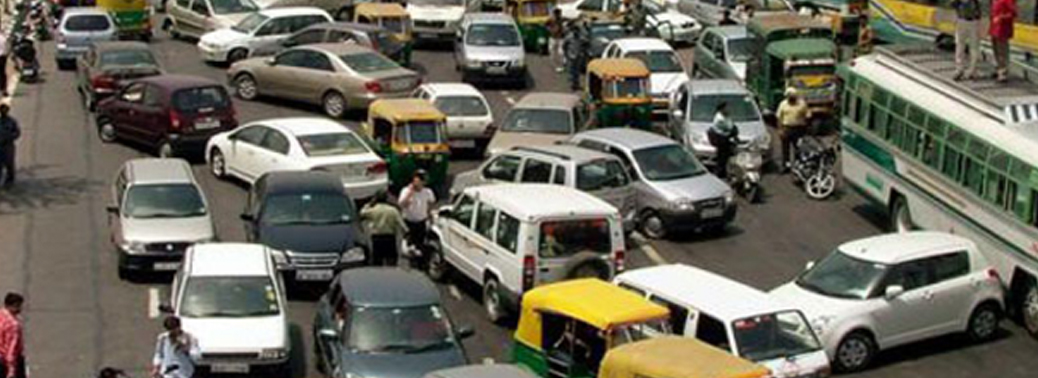
Why in News?
- The Ministry of Road Transport and Highways recently released the annual report on road accidents in India.
What does the Report Say?
- More than 1.5 lakh people lost their lives in road crashes in the country in 2018, registering an increase of 2.4% as compared to the year before, when there were 1.47 lakh fatalities.
- It shows a daily average of 1,280 road crashes and 415 deaths which is 53 crashes and the loss of 17 lives every hour.
- Road traffic injuries constitute the eighth leading cause of deaths in India in 2018.
- Geneva-based World Road Federation’s World Road Statistics 2018 says India is the most unsafe country in the world for road users across 199 countries. It’s followed by China (63,000 deaths) and the U.S. (37,000 deaths).
- The annual report also reveals that of the total people killed in road crash deaths in 2018, 48% were between 18 years and 35 years old. Minors involved in road crash deaths were at 6.6% of the total deaths.
- Among the States, Tamil Nadu (13.7%) topped the country in terms of the total number of road crashes, followed by Madhya Pradesh (11%) and Uttar Pradesh (9.1%).
- The highest road fatalities were observed In Uttar Pradesh (22,256) followed by Maharashtra (13,261) and Tamil Nadu (12,216).

What is the Cause for Accidents?
- Over-speeding is a major cause, accounting for 64.4% of the persons killed.
- This category was followed by driving on the wrong side of the road, which accounted for 5.8% of the accident related deaths.
- Use of mobile phones accounted for 2.4% of the deaths and drunken driving accounted for 2.8% of the persons killed.
What is the Cause for Death?
- Not wearing helmets and seat belts are not causes of crashes, but are critical for avoiding grievous injuries and fatalities.
- As many as 43,614 deaths or 28.8% of total road accident deaths in the country last year were caused due to “non-wearing of helmets”.
- “Non-wearing of seat belts” was linked to 24,435 deaths or 16.1% of total road accident deaths in the country.
What do Experts Say?
- Lot of States have opposed the implementation of the Motor Vehicles Amendment Act or have reduced the fines are amongst the States with the highest road crash fatalities.
- Uttar Pradesh, Gujarat and Uttarakhand were among the States that heavily slashed the penalties levied under the amended law.
- The latest data highlights the urgent need on part of the States to implement key road safety provisions of the Motor Vehicles Amendment Act, 2019
STEEL SCRAP RECYCLING POLICY
11, Nov 2019
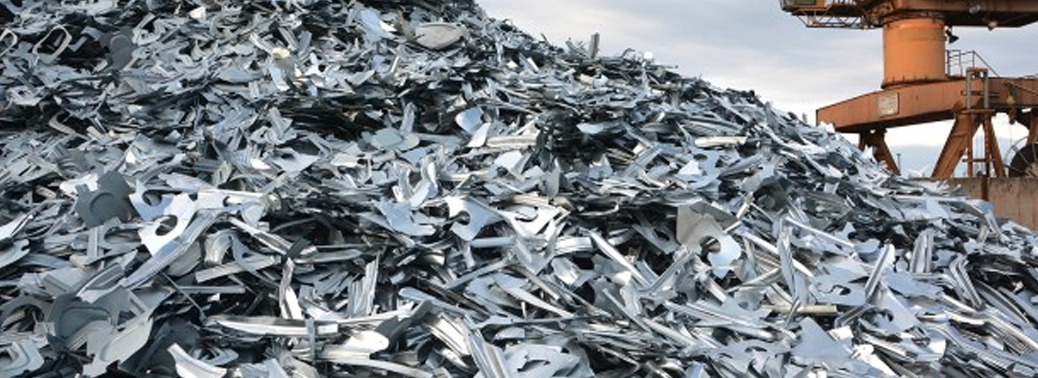
Why in News?
- Ministry of Steel has issued the Steel Scrap Recycling Policy.
Background:
- Steel Ministry’s endeavor is to develop a globally competitive steel industry by adopting state of the art environment friendly technologies.
- Ferrous Scrap being the primary raw material for electric arc furnace (EAF) and induction furnace (IF) based steel production, the policy envisages a framework to facilitate and promote establishment of metal scrapping centers in India. This will ensure scientific processing & recycling of ferrous scrap generated from various sources and a variety of products.
- The policy framework shall provide standard guidelines for collection, dismantling and shredding activities in an organized, safe and environmentally sound manner.
- Steel is a material most conducive for circular economy as it can be used, reused and recycled infinitely.
- While iron ore remains the primary source of steel making, used or re-used steel in the form of Scrap is the secondary raw material for the steel industry.
- Indian steel industry is characterized by the presence of a large number of small steel producers who utilize scrap with other inputs in EAF/IF for steel making.
Objectives:
- To promote circular economy in the steel sector.
- To promote a formal and scientific collection, dismantling and processing activities for end of life products that are sources of recyclable (ferrous, non- ferrous and other non-metallic) scraps which will lead to resource conservation and energy savings and setting up of an environmentally sound management system for handling ferrous scrap.
- Processing and recycling of products in an organized, safe and environment friendly manner.
- To evolve a responsive ecosystem by involving all stakeholders.
- To produce high quality ferrous scrap for quality steel production thus minimizing the dependency on imports.
- To decongest the Indian cities from end-of-live vehicle (ELVs) and reuse of ferrous scrap.
- To create a mechanism for treating waste streams and residues produced from dismantling and shredding facilities in compliance to Hazardous & Other Wastes (Management & Trans boundary Movement) Rules, 2016 issued by MoEF & CC.
- To promote 6Rs principles of Reduce, Reuse, Recycle, Recover, Redesign and Remanufacture through scientific handling, processing and disposal of all types of recyclable scraps including non-ferrous scraps, through authorized centers / facility.
Significance:
- The availability of scrap is a major issue in India and in 2017 the deficit was to the tune of 7 million Tons. This was imported at the cost of more than Rs. 24,500 crores (approx.) in 2017-18.The gap between demand and supply is can be reduced in the future and the country may be self-sufficient by 2030.This is mainly because with the increase in consumption of steel in the recent past and ELVs, the generation of scrap is likely to be increased considerably.This scrap has to be channelized so that the same can be utilized for steel production in an environmentally friendly manner.
- The scrapping policy shall ensure that quality scrap is available for the steel industry.
National Steel Policy 2017:
- National Steel Policy 2017 (NSP-2017) aims to develop a globally competitive steel industry by creating 300 Million TPA Steel production capacity by 2030 with a contribution of 35-40% from EAF/IF route.
- The availability of raw materials at competitive rates is imperative for the growth of the steel industry and to achieve NSP-2017 target. Thus, the availability of right quality of scrap, in adequate quantity is one of the critical factors for the future growth for both EAF/IF sector & primary sector.
- Scrap based steel making technologies have been envisaged as one of the important options to reduce GHG emission intensity. This shall feature as an important initiative of the steel sector to minimize Green House Gas (GHG) emissions.
ADJUSTED GROSS REVENUE (AGR) IN TELECOM SECTOR
05, Nov 2019

Why in News?
- In a strongly-worded order, the Supreme Court of India upheld the Department of Telecom (DoT)’s interpretation of “adjusted gross revenue” (AGR).
- This came as a huge blow to telecom service providers.
- Following the order, the telcos are now staring at dues of an estimated ₹1.4 lakh crore, which needs to be paid to the government within three months.
- Most industry players and analysts have argued that the payout of the huge amount could be the final straw for the already distressed sector.
AGR:
- Adjusted Gross Revenue (AGR) is the usage and licensing fee that telecom operators are charged by the Department of Telecommunications (DoT).
- It is divided into spectrum usage charges and licensing fees, pegged between 3-5 percent and 8 percent respectively.
- The definition of AGR has been under litigation for 14 years.
- While telecom companies argued that it should comprise revenue from telecom services, the DoT’s stand was that the AGR should include all revenue earned by an operator, including that from non-core telecom operations.
- The AGR directly impacts the outgo from the pockets of telcos to the DoT as it is used to calculate the levies payable by operators.
- Currently, telecom operators pay 8% of the AGR as licence fee, while spectrum usage charges (SUC) vary between 3-5% of AGR.
Why do telcos need to pay out Large Amounts?
- Telecom companies now owe the government not just the shortfall in AGR for the past 14 years but also an interest on that amount along with penalty and interest on the penalty.
- While the exact amount telcos will need to shell out is not clear, as in a government affidavit filed in the top court, the DoT had calculated the outstanding licence fee to be over ₹92,000 crore.
- However, the actual payout can go up to ₹1.4 lakh crore as the government is likely to also raise a demand for shortfall in SUC along with interest and penalty.
- Of the total amount, it is estimated that the actual dues is about 25%, while the remaining amount is interest and penalties.
Concerns:
- The telecom industry is reeling under a debt of over ₹4 lakh crore and has been seeking a relief package from the government.
- Even the government has on various occasions admitted that the sector is indeed undergoing stress and needs support.
- Giving a ray of hope to the telecom companies, the government recently announced setting up of a Committee of Secretaries to examine the financial stress in the sector, and recommend measures to mitigate it.
NEW MEASURES TO BOOST EXPORTS AND HOUSING SECTOR
15, Sep 2019
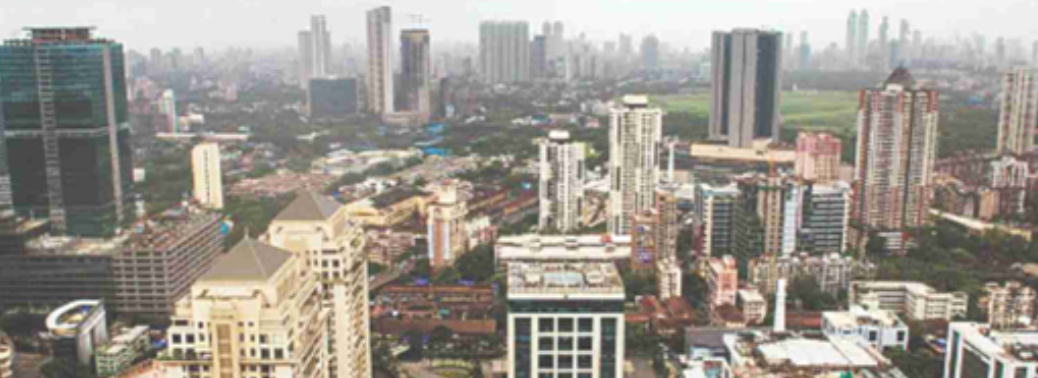
Why in News?
- Finance Minister Nirmala Sitharaman has announced a fresh set of measures worth around 70,000 crore rupees to boost exports and housing sector.
- The government will provide a 10,000 crore rupees special window with an aim to help complete ongoing affordable and middle-income housing projects.
Background:
- As part of the third stimulus package for the economy, Finance Minister unveiled a set of stimulus measures to boost exports and the housing sector.
- New Booster dose for the economy comes at a time when the country had reported its weakest growth in more than six years at 5 per cent in the June quarter.
- The previous low in GDP growth was recorded at 4.3 percent in Jan-Mar quarter of 2012-13. The economic slowdown has particularly been harsh on the automobile sector with domestic passenger vehicle sales having skidded for the 10th consecutive month in August, registering a 31.57 percent decline.
- The International Monetary Fund (IMF) said that Indian economy was “much weaker” than expected. This was attributed to the corporate and environmental regulatory uncertainty and lingering weakness in some non-banking financial companies.
- The new package of measures for exports sector came in six different silos and covered steps that would address comprehensively tax and duties refunds for exporters; improve credit flow to the export sector and launch of a special free trade agreement (FTA) utilisation mission. India will also now host annual mega shopping festivals in 4 places.
Steps to Boost Exports:
- Government announced the introduction of a new attractive scheme for Remission of Duties or Taxes on Export Product (RoDTEP) to replace the existing Merchandise Exports from India Scheme (MEIS) from January 2020 and revised priority sector lending norms for export credit that will release an additional Rs 36,000 crore to Rs 68,000 crore as export credit under priority sector.
- It was made clear that RoDTEP would span all the sectors and the revenue foregone could be about Rs 50,000 crore.
- The duty remission will vary from sector-to-sector. With the introduction of RoDTEP, all the uncertainty over continuation of MEIS is over.
Steps to Boost Housing Sector:
- New measures to boost housing sector were brought in owing to the fact that nearly 3.5 lakh dwelling units (non NPA and non NCLT) in the country are plagued with last mile funding problem.
- Rs 20,000 crore fund (Rs 10,000 crore from Government and roughly same amount from outside investors) would be set up to provide last mile funding for affordable and middle-income housing.
- This fund will be used to support projects that are non-NPA and non-NCLT projects and the objective is to focus on construction of unfinished units.
- The fund would be set up as a Category-II AIF trust and would be professionally run with experts from housing and banking sector.
- It was made clear that the Government was “open” to bring in sovereign wealth funds as investors. Besides the Government, the other investors who are likely to contribute to the fund include LIC and other institutions and private capital from banks and DFIs.
- External Commercial Borrowing (ECB) guidelines will be relaxed to facilitate financing of home buyers who are eligible under the PMAY, in consultation with RBI.
- This will be in addition to the existing norms for ECB for affordable housing.
- Also, the Finance Minister came up with some good news for government servants, stating that interest rates on house building advance will be lowered and linked with the 10-year G-sec yields.
‘ANGAN’- INTERNATIONAL CONFERENCE ON ENERGY EFFICIENCY IN BUILDING SECTOR
10, Sep 2019

Why in News?
- An international conference ANGAN (Augmenting Nature by Green Affordable New-habitat) focussed on Energy Efficiency in Building Sector
- The Conference is being organised by the Bureau of Energy Efficiency (BEE), Ministry of Power, Government of India in collaboration with GIZ under the Indo German Technical Cooperation.
Highlights:
- The International Conference will provide a platform to deliberate on interdependence between organizations, systemic sustainability and feedback loops for better resource efficiency.Given the formidable challenge of providing adequate energy of desired quality to the consumers at reasonable costs, improving the efficiency in high energy consumption sectors like buildings have become important component of our integrated energy policy.
- Due to lack of awareness and knowledge about latest technologies, financial assistance, suppliers and purchase of energy-efficient equipment, etc. efforts on energy efficiency and conservation in this sector have been moderate and therefore require greater push.
- This event aims to provide thrust in this direction so as to address such challenges faced by the stakeholders.
BEE:
- The BEE is a statutory body under the Ministry of Power, Government of India. It assists in developing policies and strategies with the primary objective of reducing the energy intensity of the Indian economy.
- BEE coordinates with designated consumers, designated agencies, and other organizations to identify and utilize the existing resources and infrastructure, in performing the functions assigned to it under the Energy Conservation Act.
NATIONAL INFRASTRUCTURE PIPELINE OF RS. 100 LAKH CRORE
09, Sep 2019
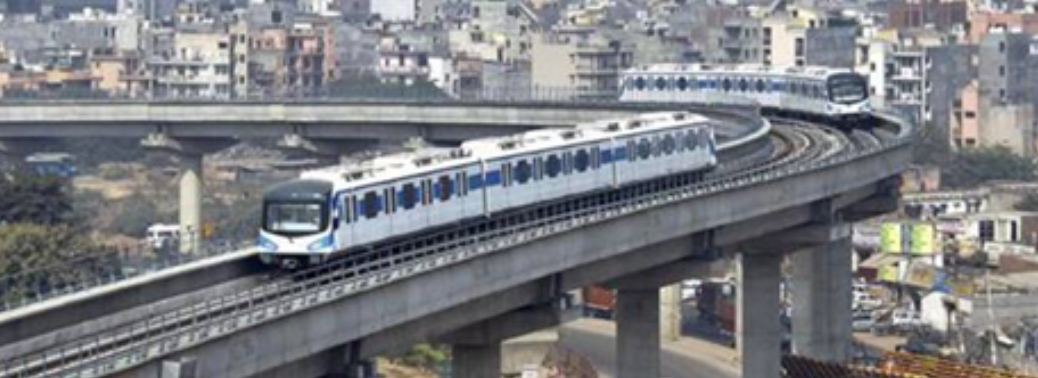
Why in News?
- To achieve the GDP of $5 trillion by 2024-25, India needs to spend about $1.4 trillion (Rs. 100 lakh crore) over these years on infrastructure.
- To achieve this task, a Task Force under the chairmanship of Secretary (DEA) has been constituted by Union Finance Minister to draw up a National Infrastructure Pipeline for each of the years from FY 2019-20 to FY 2024-25.
Highlights:
- In the past decade (FY 2008-17), India invested about $1.1 trillion on infrastructure.
- The challenge is to step-up annual infrastructure investment so that lack of infrastructure does not become a binding constraint on the growth of the Indian economy.
- Hon’ble Prime Minister in his Independence Day speech highlighted that Rs.100 lakh crore would be invested on infrastructure over the next five years.
- Infrastructure projects will include social and economic infrastructure projects. To implement an infrastructure program of this scale, it is important that projects are adequately prepared and launched.
National Infrastructure Pipeline:
- The National Infrastructure Pipeline would include greenfield and brownfield projects costing above Rs 100 crore each.
- Other qualifications for inclusion in the pipeline for the current year will include availability of a DPR, feasibility of implementation, inclusion in the financing plan and readiness/ availability of administrative sanction.
- Each Ministry/ Department would be responsible for monitoring of projects so as to ensure their timely and within-cost implementation.
- The Task Force will also enable robust marketing of the pipeline of projects requiring private investment through the India Investment Grid (IIG), National Investment & Infrastructure Fund (NIIF), etc.
ULTRA-MEGA SOLAR PARK
21, Aug 2019

- Context:National energy major NTPCis planning to set up an ultra-mega solar park in the Kutch region of Gujarat that will produce up to 5,000 megawatts and involve an investment of Rs20,000 crore or more.
- Objective: This move is aimed at scaling up the renewable portfolio of India’s largest power producer with 55,786 MW of installed capacity.
Background:
- The National Solar Mission (NSM) was launched in 2010 as a major initiative of the Government of India with active participation from states to promote ecologically sustainable growth while addressing India’s energy security challenges.
- It will also constitute a major contribution by India to the global effort to meet the challenges of climate change
Aim:
- The mission targets include deployment of 20,000 MW of grid-connected solar power by 2022 to be achieved in three phases which include 2,000 MW of off-grid solar applications including 20 million solar lights by 2022 and 20 million sq. m. solar thermal collector area.
Major Schemes of The Central Government:
- The government of India has launched several schemes to achieve the target of 100 GW
- Grid Connected:
- Scheme for setting up of over 300 MW of Grid connected solar PV projects by Defence establishments and para military forces
- Scheme for development of Solar parks and Ultra Mega Solar power projects of 40,000 MW
- 750 MW VGF scheme under JNNSMM Phase II Batch I
- 2,000 MW VGF scheme of NSM Phase II Batch III
- 5,000 MW VGF Scheme Batch IV Phase II
- Setting up of 1000 MW of Grid connected solar PV Power project by CPSUs, Government organizations
- 15,000 MW grid connected solar PV power plants through NTPC
- Grid connected rooftop and small solar plants of 4,200 MW
- Development of 100 MW Grid connected solar PV power plants on canal banks and tops
- Off Grid
- Capital subsidy scheme for providing basic lighting needs through solar charging stations (with lanterns) to be implemented in 100 villages in each of 60 LWE affected districts
- Off grid & Decentralized solar application scheme in 2nd phase of JNNSM-Solar cooker programme
- Capital subsidy scheme for installation of solar thermal systems
- Solar water heating Solar air heating
- Solar steam generation/ pressurized hot water/air systems
- Solar thermal refrigeration/cooling
- Solar Thermal Power Park (including hybrid with Solar PV)
- Installation of 10,000 nos. of solar photovoltaic water pumping systems for irrigation purpose implemented through NABARD
The Current Status of Solar Park Development in India:
- The Ministry of New and Renewable Energy (MNRE), Government of India, is already implementing a scheme for development of solar parks which was launched in December 2014.
- The capacity of the solar park scheme has been stages of development. Solar projects of aggregate capacity 2,151 MW have already been commissioned in 5 Solar Parks up to August 31, 2017
- The total capacity when operational will generate 64 billion units of electricity per year which will lead to abatement of around 55 million tonnes of CO2 per year over its life cycle.
- It would also contribute to the long-term energy security of the country and promote ecologically sustainable growth by a reduction in carbon emissions and carbon footprint, as well as generate large direct and indirect employment opportunities in solar and allied industries, such as glass, metals, heavy industrial equipment, etc.
Challenges & Way Forward:
- Solar irradiance in the State, availability of conducive State policy for solar, and business environment, such as the willingness of DISCOMs to purchase the solar power, payment security, power evacuation infrastructure, etc., are the challenges envisaged.
- In India, one of the biggest challenges faced is land allotment.
- Then, there is the revenue department, the issue of private land conversion, all these are time-consuming and challenges.
- The other challenges are matching the timelines between the development of solar parks including power evacuation arrangements of central transmission utility (CTU) or state transmission utilities (STU) and setting up of solar projects.
- However, with active involvement and making concerted efforts in consultation with State Governments and different stakeholders these challenges are getting easier to deal with. Overall, the solar parks project has been very positive and the response from developers has been encouraging.
- As a result, energy storage, hybrid project, and large grid connected wind–solar PV system in India for optimal and efficient utilization of transmission infrastructure and land; there has been reduction of the variability in renewable power generation and thus achieving better grid stability and improved power quality projects initiated
NORTH EASTERN REGION VISION 2020
26, Jul 2019

Why in News?
- North Eastern Region Vision 2020 document provides an overarching framework for the development of the North Eastern Region.
- The main objective is to bring the north eastern region at par with other developed regions under which different Ministries, including the Ministry of Development of North Eastern Region have undertaken various initiatives.
Reasons for resource flow:
- Mandatory earmarking of at least 10% of GBS of Central Ministries/Departments for North Eastern Region (NER).
- Creation of Non-Lapsable Central Pool of Resources (NLCPR).
- There has been a sharp rise in provisional expenditure (subject to final vetting by Ministry of Finance) by Central Ministries in NER by 83%.
Major initiatives:
- Strengthening infrastructure and connectivity is a major thrust area identified by the Vision document. Several connectivity initiatives have been undertaken in the recent past.
- In the last five years under the schemes of Ministry of DoNER funds were released for road projects, bridges, ISBT, airports, railway in North Eastern Region.
- Moreover, Regional Connectivity Scheme (RCS-UDAN) has been launched to provide connectivity to unserved and underserved Airports within the country.
- Also, to promote regional connectivity, airfare has been made affordable through Viability Gap Funding (VGF). The North East has been kept as a priority area under RCS-UDAN.
- In respect of Rail Connectivity, during the last four years the entire North East Region has been converted to the Broad Gauge (BG) network.
Other major initiatives taken:
- Promotion of MSMEs in North Eastern Region and Sikkim
- Comprehensive Telecom Development Project (CTDP) for the North-Eastern Region
- Comprehensive Scheme for strengthening of Transmission and Distribution Systems (CSST&DS).
- North Eastern Region Power System Improvement Project (NERPSIP)
- Mission Organic Value Chain Development for North Eastern Region scheme
- North East Region Textile Promotion Scheme (NERTPS).
- National Sports University at Imphal, Agartala-Akhaura Rail-Link to connect the existing Agartala station in Tripura to Akhaura Station of Bangladesh Railways
- Development of Brahmaputra and 19 new waterways including Barak.
BENGALURU GOES LIVE WITH FACIAL BIOMETRICS-BASED AIR TRAVEL
25, Jul 2019
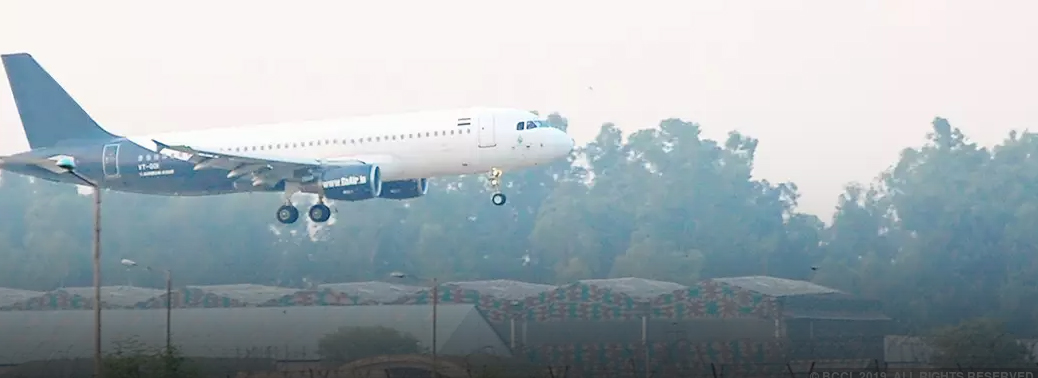
Why in News?
- The Kempegowda International Airport (KIA) rolled out a biometric-based self-boarding facility.
Highlights:
- The passengers had the option of boarding a flight without producing travel documents at each touch point.
- To avail this facility, a passenger has to enrol their ID, biometric data and flight details before entering the terminal.
- The passenger will be authenticated and verified at every touch point by biometric technology.
Paperless Biometric System:
- The Bangalore International Airport Limited (BIAL), the operator of the KIA, is expected to deploy the paperless biometric system at over 350 passenger touch points in Terminal 1 with the final phase of the project.
- In the final stage, this technology will be integrated with the Digi Yatra Central Platform that is currently being architecture by the central government’s Digi Yatra Foundation.
User Data Privacy:
- The BIAL maintains that biometric data is used only for authentication and verification of passengers to assist the boarding process, and not for recognition.
- The process offers the highest degree of safety and security while ensuring stringent standards of safety.
- Passenger data will be deleted within a few hours of completion of air travel.
- Vision Box, the company that developed and installed One – ID biometric platform technology, is compliant with the European Union’s General Data Protection Regulation (GDPR), which adopts privacy by design principles.
NO COMPROMISE ON AIR SAFETY: MINISTRY OF CIVIL AVIATION
23, Jul 2019
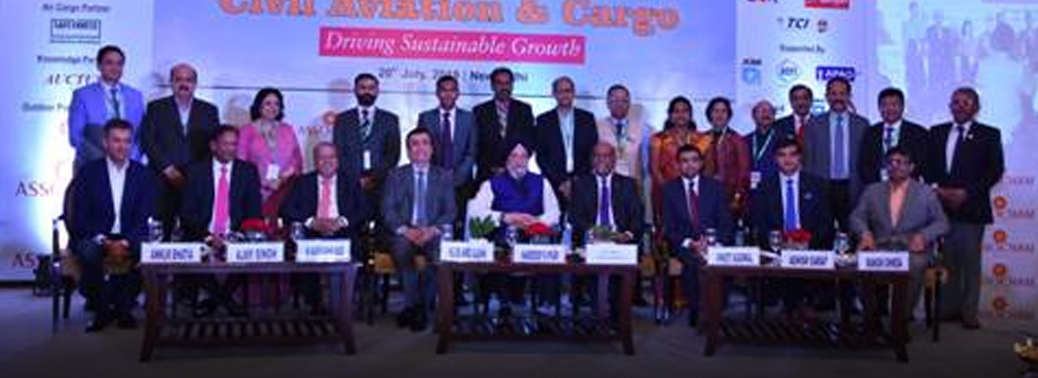
Why in News?
- Speaking at the International conference cum awards on civil aviation and cargo, the Minister of State(I/c) for Civil Aviation, Housing & Urban Development said that the Ministry would not tolerate any compromise on Air Safety and standards.
- The event organised by ASSOCHAM.
Highlights:
- The first National Air Cargo Policy’s (NACP) outline was released at the Global Aviation Summit in January 2019.
- It aims to achieve fundamental re-engineering of the whole-of-the-value-chains for domestic and export-import air freight for reaching the target of handling 10 million tonnes by 2026-27.
National Civil Aviation Policy:
- A comprehensive National Civil Aviation Policy (NCAP) was announced in 2016, covering 22 areas of the Civil Aviation sector.
- It was framed to boost regional air connectivity, establish an integrated ecosystem to promote tourism and generate employment.
National Air Cargo Policy’s (NACP):
- The National Air Cargo Policy unveiled at the Global Aviation Summit 2019, seeks to make India among the top five air freight markets by 2025, besides creating air transport shipment hubs at all major airports over the next six years.
The policy aims at encouraging code sharing/inter-line agreements between foreign and Indian carriers. - The policy seeks to establish agreements between national carriers/ freighters and integrators to improve domestic connectivity as well as encourage the establishment of agreements between national and international carriers/freighters and other airline operators to provide access to key global cargo hubs.
- It also aims to promote the development of a last mile/first mile connectivity program at international/regional gateways. As part of the security strategy under the policy, the strategy will address security related to the physical cargo, people handling the cargo, data and information related to shipments within and across all chains of custody transfers.
- To increase process transparency while decreasing shipment delays, costs and dwell time, a fully automated paperless trade environment with minimum face-to-face interactions will be implemented
- The policy assured that The GST and other economic legislation would be reviewed by the appropriate government agencies to ensure effective measures are in place to support the national air cargo development strategies.
PRIVATE SECTOR INVESTMENT IN DEFENCE PRODUCTION
23, Jul 2019
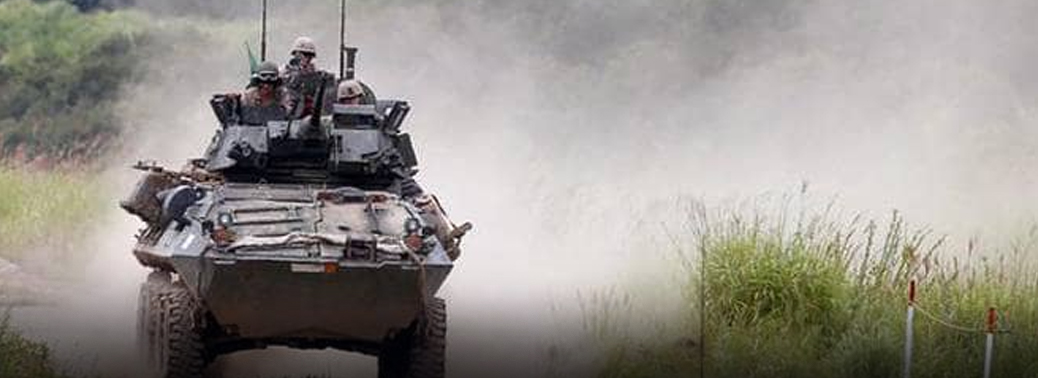
Why in News?
- The defence industry sector was opened up to 100% for private sector participation in May 2001 through licensing.
Highlights:
- Defence Procurement Procedure (DPP) had been revised in 2016 wherein specific provisions have been introduced for stimulating growth of the domestic defence industry.
- A new category of procurement ‘Buy {Indian-IDDM (Indigenously Designed, Developed and Manufactured)}’ has been introduced in DPP-2016 to promote indigenous design and development of defence equipment.
- ‘Buy (Indian)’, ‘Buy and Make (Indian)’ & ‘Make’ categories of capital acquisition have been given preference over ‘Buy (Global)’& ‘Buy & Make (Global)’categories.
- The ‘Strategic Partnership (SP)’ model has been notified by the government to establish longstanding strategic partnerships with Indian entities through a transparent and competitive process, in order to tie up with Original Equipment Manufacturers (OEMs) to seek technology transfers to set up domestic manufacturing infrastructure and supply chains.
- The ‘Make’ Procedure has been simplified with provisions for funding of 90% of development cost by the Government to Indian industry and reserving projects not exceeding development cost of Rs.10 crore (Government funded) and Rs.3 crore (Industry funded) for MSMEs.
- Separate procedure for ‘Make-II’ subcategory has been notified wherein a number of industry friendly provisions such as relaxation of eligibility criterion, minimal documentation, provision for considering proposals suggested by industry/individual, etc. have been introduced.
- The Government will establish two defence industrial corridors to serve as an engine of economic development and growth of defence industrial base in India.
- An innovation ecosystem for Defence titled Innovations for Defence Excellence (iDEX) has been launched in April, 2018. iDEX is aimed at creation of an ecosystem to foster innovation and technology development in Defence and Aerospace by engaging Industries including MSMEs, Start-ups, Individual Innovators, R&D institutes and Academia and provide them grants/funding and other support to carry out R&D.
- The Mission Raksha Gyan Shakti has been introduced to encourage IPR culture in indigenous defence industry.
- A Policy for indigenisation of components and spares used in Defence Platforms has been notified in April 2019.
- A Defence Investor Cell has been created in the Defence Ministry to provide all necessary information including addressing queries related to investment opportunities, procedures and regulatory requirements for investment in the sector.
- FDI is now allowed under automatic route up to 49% and beyond 49% through Government route.
- Export clearance process has been streamlined and a scheme for the promotion of defence exports has been notified.
- Technology Development Fund (TDF) has been set up by the GOI to encourage participation of public/private industries especially MSMEs, through provision of grants.
- Offset guidelines have been made flexible by allowing change of Indian Offset Partners (IOPs) and offset components, even in signed contracts. Foreign Original Equipment Manufacturers (OEMs) are now not required to indicate the details of IOPs and products at the time of signing of contracts. ‘Services’ as an avenue of offset have been reinstated.
UJH AND BASANTAR BRIDGES IN J&K
23, Jul 2019

Why in News?
- Raksha Mantri inaugurated the One-kilometre long Ujh bridge in Kathua district, 617.40-Metre-long Basantar bridge in Samba district of Jammu & Kashmir today and dedicated these to the Nation.
Highlights:
- One Km long Ujh bridge is the longest bridge constructed by BRO.
- These bridges will provide smooth connectivity and are vital for the Army for deployment on border areas.
- These bridges will be a big relief for the local people of border villages of Kathua and Samba sector as road connectivity used to get disrupted during Monsoon.
Border Roads Organisation:
- The Border Roads Organisation develops and maintains road networks in India’s border areas and friendly neighboring countries.
- Currently, the organisation maintains operations in twenty-one states, one UT (Andaman and Nicobar Islands), and neighboring countries such as Afghanistan, Bhutan, Myanmar, and Sri Lanka.
- The Border Roads Organisation works under the Ministry of Defence.
DIBANG MULTIPURPOSE PROJECT
19, Jul 2019

Why in News?
- The Cabinet Committee on Economic Affairs has approved the expenditure on pre-investment activities and various clearances for Dibang Multipurpose Project (MPP) in Arunachal Pradesh for an amount of Rs. 1600 crore.
- Dibang Multipurpose Project:
- Dibang Multipurpose Project (Dibang MPP) is envisaged as a storage-based hydro-electric project with flood moderation as the key objective.
- The construction of Dibang MPP shall prevent the sizeable downstream area from floods. After implementation of master plan of Brahmaputra Board for flood moderation of all rivers contributing to river Brahmaputra, of which Dibang MPP is one of the components, sizable area will be protected from flooding and help in mitigating the perennial damage due to floods in Assam.
- The project shall generate 2880MW (12x240MW) power to produce 11223MU of energy in a 90% dependable year.
- This is the largest ever Hydro Electric Projects to be constructed in India.
- The dam is 278 metres high and will be the highest dam in India once completed.
INDIAN NUCLEAR INSURANCE POOL
12, Jul 2019

Why in News?
- The Government has created an Indian Nuclear Insurance Pool (INIP) in June 2015, a union minister informed in Lok Sabha.
Indian Nuclear Insurance Pool:
- M/s. General Insurance Corporation of India (GIC-Re), along with several other Indian Insurance Companies, have launched the Indian Nuclear Insurance Pool (INIP) with a capacity of ₹1500 crore. This aims to provide insurance to cover the liability against accidents as prescribed under Civil Liability for Nuclear Damage (CLND) Act, 2010.
- This has addressed issues related to Civil Liability for Nuclear Damage (CLND) Act and had facilitated commencement of work in setting up new nuclear power projects.
Nuclear Power in India:
- The present nuclear power capacity is 6780 MW comprising of 22 reactors.
- There are 9 reactors with a capacity of 6700 MW (including 500 MW PFBR being implemented by BHAVINI) under construction.
- The Government in 2017 has also accorded administrative approval and financial sanction of 12 nuclear power plants totalling to a capacity of 9000 MW.
- On their progressive completion, the installed nuclear capacity is expected to reach 8180 MW by 2020 and 22480 MW by 2031.
WIND ENERGY IN INDIA
05, Jul 2019

- Context– India’s emerging green economy will require additional investments of around $80 billion till 2022, growing more than threefold to $250 billion during 2023-30,
Aim:
- The country has an installed Renewable Energy Capacity of about 80 gigawatts (GW) and is running the world’s largest renewable energy programme with plans to achieve 175GW by 2022 and 500GW by 2030, as part of its climate commitments.
- Policy- National Off-Shore Wind Policy was notified in 2015
Offshore Wind Farming:
- Two Types viz. shallow water and deep-sea farming
- Advantages of Offshore wind farming
- Stronger Winds for efficient generation of power;
- No impact on real estate value of land as in case of onshore wind farming;
- Its ability to fulfill the demand of the heavily populated coastal regions
Issues
- Heavy investments, better technology needed, maintenance issues etc.
- challenges of assigning no-go areas for commercial shipping
Why so much Investment in Wind energy now?
- The push for green energy also comes against the backdrop of the Organization of the Petroleum Exporting Countries (OPEC)-plus arrangement extending its compact for production cuts.
- The production cut extension will have a wide-ranging impact on energy markets, given that OPEC accounts for around 40% of the global output.
- It is expected to have a particular fallout on India due to the OPEC accounting for around 83% of the country’s total crude oil imports.
Global Energy Landscape:
- London Stock Exchange (LSE) has classified oil and gas stocks as non-renewable energy. The move marks a fundamental change in the global investment culture against the backdrop of growing climate concerns with several countries focusing on renewable energy.
- India has also emerged as the voice of consuming nations amid global uncertainties in the energy markets with supplies from Iran and Venezuela drying up and tension escalating in the Persian Gulf.
Efficiency and Universal access of Energy:
- Energy intensity of India’s GDP has been declining in the recent past, which is reflective of increases in the efficiency of energy use.
- India cannot become an upper-middle-income country without
- 1. Rapidly raising its share of the global energy consumption commensurate with its share of the global population, and
- 2. Ensuring universal access to adequate modern commercial energy at affordable prices.
Conclusion:
- Having greater energy efficiency is crucial for India that is now the biggest emitter of greenhouse gases after the US and China, and which is also among nations most vulnerable to climate change.
- India plans to reduce its carbon footprint by 33-35% from its 2005 levels by 2030, as part of its commitments to the United Nations Framework Convention on Climate Change adopted by 195 countries in Paris in 2015.
National Electric Mobility Mission Plan
04, Jul 2019

Why in News?
- The National Electric Mobility Mission Plan (NEMMP) 2020 is a National Mission document providing the vision and the roadmap for the faster adoption of electric vehicles and their manufacturing in the country.
Highlights:
- The plan has been designed to enhance national fuel security
- To provide affordable and environmentally friendly transportation
- To enable the Indian automotive industry to achieve global manufacturing leadership.
- As part of the NEMMP 2020, Department of Heavy Industry formulated a Scheme viz. Faster Adoption and Manufacturing of (Hybrid &) Electric Vehicles in India (FAME India) Scheme in the year 2015 to promote manufacturing of electric and hybrid vehicle technology and to ensure sustainable growth of the same.
- FAME-India Scheme Phase – II for promotion of Electric Mobility in the country.
- The scheme proposes to give a push to electric vehicles (EVs) in public transport.
- It seeks to encourage adoption of EVs by way of market creation and demand aggregation.
Targets:
- Target of deploying 5 to 7 million electric vehicles in the country by 2020
- Emphasizes importance of government incentives and coordination between industry and academia
- Target of 400,000 passenger battery electric cars (BEVs) by 2020 ~ avoiding 120 million barrels of oil and 4 million tons of CO2
- Lowering of vehicular emissions by 1.3 percent by 2020
- Total investment required – INR 20,000 – 23,000 cr (approx 3 billion USD)
FAME India:
- FAME India is a part of the National Electric Mobility Mission Plan. Main thrust of FAME is to encourage electric vehicles by providing subsidies.
- Vehicles in most segments – two wheelers, three wheelers, electric and hybrid cars and electric buses obtained the subsidy benefit of the scheme.
- FAME focuses on 4 areas i.e. Technology development, Demand Creation, Pilot Projects and Charging Infrastructure.
NATIONAL WAREHOUSING GRID
03, Jul 2019
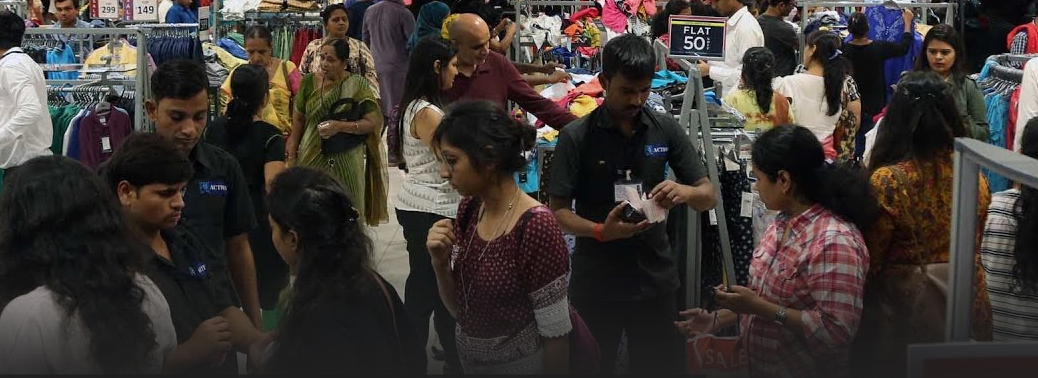
Why in News?
- The government is likely to introduce warehousing schemes at village and National level to build an efficient storage infrastructure.
A National Warehousing Grid along the National Highways may also be introduced in the Budget.
National Warehousing Grid:
- The Centre’s scheme aims at broad integration of the warehousing capacities in India.
- Approximately 90% of the warehousing space is controlled by unorganised players, with small warehouses of less than 10,000 sq ft area.
- An action plan has already been approved by the Centre on sectoral basis for the construction of steel silos with a capacity of 100 lakh metric tonnes in PPP mode for modernizing storage infrastructure and improving shelf life of stored food grains.
Significance of scheme:
- Practically, much of the country’s warehousing capacity outside of the agri sector is in the unorganised sector, with small warehouses of less than 10,000 sq ft area.
- Currently, of the total warehousing space of about 180 million sq ft in the country, the industrial segment accounts for about 86% and the agricultural sector the rest 14%, according to NITI statistics.
- Two-thirds of the warehousing capacity in the food storage segment is owned by the public sector.
- Apart from conventional storing services, India’s warehousing capacity is increasingly being used to offer value-added services such as the consolidation and breaking up of cargo, packaging, labelling, bar coding and reverse logistics.
Plugging deficiencies:
- The project is aimed at plugging deficiencies given that India’s current cold storage capacity at 25 MT is barely sufficient for 10% of the fruits and vegetables produced in the country.
- The lack of adequate storage infrastructure is an important reason for the high cost of food products and wastage.
- Nearly 60% of the modern warehousing capacity in India is concentrated in top six cities, namely Ahmedabad, Bengaluru, Chennai, Mumbai, Delhi-NCR and Pune, with Hyderabad and Kolkata being the other major markets, according to Care Ratings.
- This trend is driven by the concentration of industrial activity and presence of sizeable urban population around these clusters.
Beneficiaries:
- The prime beneficiaries of the new wave of growth in warehousing include peripheral locations of Tier 1 and Tier 2 cities.
- Much of the fresh investments would go into creating storage facilities for retail and consumer goods.
Forthcoming Challenges:
- The primary challenge that India’s warehousing market currently faces is acquisition of a feasible land parcel, given that land cost constitutes the largest component of a warehousing project.
- While rental values that a warehouse owner can charge are primarily driven by demand and supply factors, land prices are inherently dependent on multiple factors like development control regulations, infrastructure development and the best alternative usage of land.
CASH IN CIRCULATION HAS FALLEN
26, Jun 2019
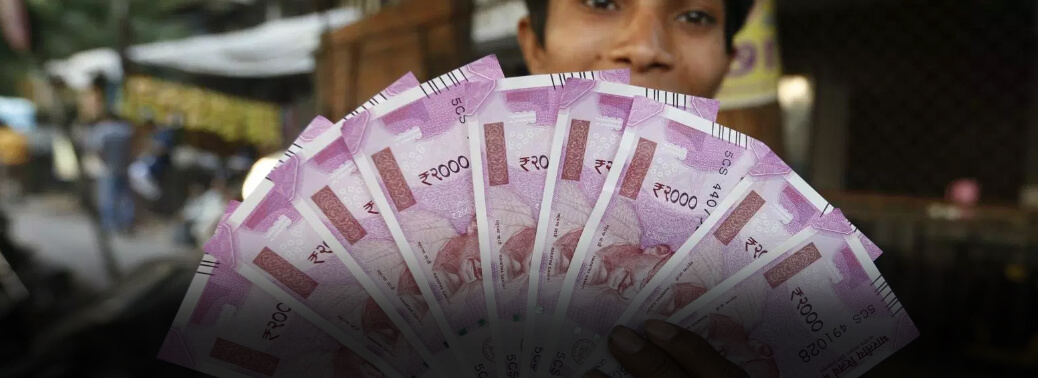
- Demonetisation, coupled with increased digital transactions and the reduced cash usage in the informal economy, led to a Reduction in Currency in Circulation by ₹3.4 lakh crore.
- The notes in circulation had been growing at an average annual growth rate of 14.51% since October 2014.
- Reserve Bank of India data shows that the number of counterfeit bank notes detected decreased from 762,072 pieces in 2016-17, to 522,783 in 2017-18 and 317,389 pieces in 2018-19 and hence “demonetisation resulted in curbing of the counterfeit currency”
- “Growth of digital transactions in terms of value has increased to ₹188.07 lakh crore in September 2018 from ₹112.27 lakh crore in November 2016. Digital transactions in terms of volume have increased to 241.88 crore in September 2018 from 91.83 crore.”
- Demonetisation led to a “significant positive impact on most theatres of violence” in the country since illegally held cash formed a major chunk of terror funding, and that the note ban rendered the cash held with terrorists worthless.
- “Demonetisation also resulted in better tax compliance, greater tax revenues, more formalization of economy and higher digital transactions.”
PROJECT MONITORING GROUP (PMG)
26, Jun 2019
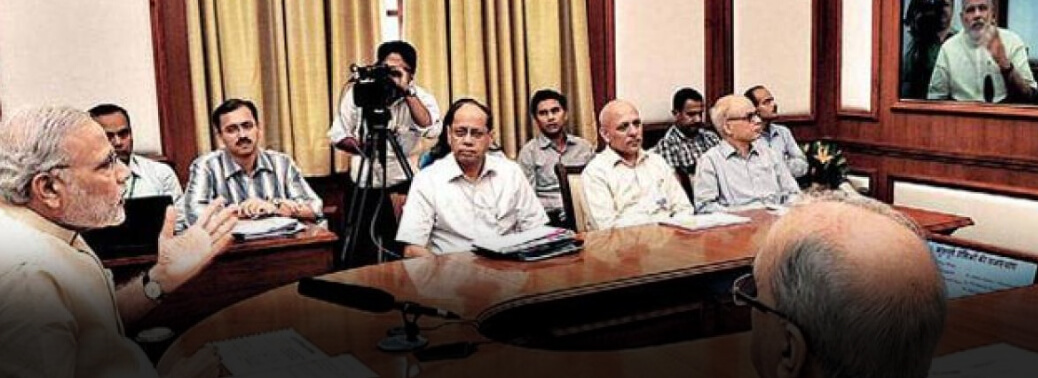
- Projects worth 11 lakh crore remain stalled or have issues under consideration. Railways, roads and Power sector accounting to more than half of these stalled projects.
- Project Monitoring Invest India Cell has resolved the issues surrounding 740 projects worth 30.5 lakh crore. However, 298 projects worth 10.98 lakh crore still have problems that are yet to be resolved.
- What is PMIC?
- The Project Monitoring Group (PMG) was set up in 2013 under Cabinet Secretariat.
- It is an institutional mechanism for resolving a variety of issues including fast tracking the approvals for setting up and expeditious commissioning of large Public, Private and Public–Private Partnership (PPP) Projects.
- PMG is now functioning under Prime Minister’s Office (PMO) since 14.09.2015.
- The projects considered by PMG mainly pertain to sectors such as:
- National Highways and Railways
- Civil Aviation and Shipping
- Petroleum & Natural Gas
- Chemicals & Fertilizers
- Coal, Power and Mines
- Cement, Construction and Steel
- PMG in association with ‘Invest India’, the agency dedicated to promotion of foreign Investment in India, also helps foreign investors intending to make large investments in India by facilitating approvals/clearances and providing them necessary support during implementation of projects
- PMG monitors digitization of Union and State level clearance processes including reengineering of such processes, wherever required for simplification and investment promotion.
35,000 KM Highways to be built by 2022
23, Jun 2019

- The government will build 35,000 km of highways, besides expressways, by 2022.
- Under the ‘Bharatmala Project’, construction or upgradation of about 35,000 kilometres of National Highways is to be undertaken by 2022.
- In addition, under the ‘Sagarmala Project’, a network of good-quality roads is being constructed in coastal areas and areas adjoining ports.
IRDAI PANEL FOR SIMPLIFYING FIRE COVER NORMS
22, May 2019

Why in News:
- A working group of insurance regulator IRDAI, revisited the structure of products providing cover to homes, offices, commercial establishments and MSMEs, has recommended many changes.
Details:
- Insurance Regulatory and Development Authority of India (IRDAI) said wordings and terms and conditions of the basic policy for fire and allied perils for all categories of risks are driven by the erstwhile All India Fire Tariff, 2001.
- IRDAI had set up the group in view of the huge gap between economic losses and insured losses, post catastrophic events, for homes, offices, commercial establishments and MSMEs.
- Noting that the protection needs of the insuring public for their assets against fire and allied risks are met by Standard Fire and Special Perils Policy (SFSP) the product structure remained, more or less, the same since the All India Fire Tariff revision in 1988
- Noting the product, created years ago, does not seem to be meeting the true protection needs of the insuring public, the group recommended introduction of three different versions of the product
- The first, and the simplest of the three with most relaxed terms, would be for homeowners while a slightly more refined version would be for micro commercial establishments having value at risk of up to ₹5 crore.
- A moderated version of the existing product is recommended for commercial risks having value at risk from ₹5 crore to ₹50 crore.
- The group said there has to be a system of default sum insured for all the dwellings such that the insured value is a reasonable estimation of the correct value of construction cost of the building.
- In case of a total loss, per square foot rate specified in the policy shall be sacrosanct and claim shall be paid after multiplying it with the actual area of the apartment
Insurance Regulatory and Development Authority of India
- Insurance Regulatory and Development Authority of India or the IRDAI is the apex body responsible for regulating and developing the insurance industry in India.
- It is an autonomous body. It was established by an act of Parliament known as the Insurance Regulatory and Development Authority Act, 1999.
- IRDAI is headquartered in Hyderabad in Telangana. The organization fought for an increase in the FDI limit in the insurance sector to 49% from the previous 26%. The FDI cap was hiked to 49% in July of 2014.
- Its primary purpose is to protect the rights of the policyholders in India. It gives the registration certificate to insurance companies in the country.
- It also engages in the renewal, modification, cancellation, etc. of this registration. It also creates regulations to protect policyholders’ interests in India.
BHARATNET can Monetise fibre Assets
22, Feb 2019

In News:
- Digital Communications Commission (DCC), the highest decision-making body for the telecom sector, has given an in-principle approval to monetise 2.5 lakh km of fibre laid under the government’s flagship BharatNet programme, by leasing or selling the assets to private players.
Explained:
- Because we have not been able to ensure effective utilization so, its proposed that fibre assets should be offered on lease or sold off through an auction to private players. Some fibre will be retained by BBNL (Bharat Broadband Network Limited)
- The lease model is being worked out and the USOF (Universal Service Obligation Fund) has been asked to present a plan within 10 days, along with estimates of the revenue proceeds.
- Further, the DCC has asked the loss-making telecom PSUs — BSNL and MTNL — to present a plan on how they could achieve higher revenue if the revival package sought by them was approved.
- Both firms have asked for monetization of land assets as well as approval for a voluntary retirement scheme (VRS) for employees. “The VRS scheme for BSNL and MTNL will have a revenue impact of Rs. 6,365 crore and Rs. 2,120 crore respectively
What is Digital Communications Commission (DCC)?
- The Digital Communications Commission (DCC), formerly Telecom Commission, is DCC,
- the apex decision-making body at the DoT
- USOF (Universal Service Obligation Fund):
Vision:
- Enabling rural Indians to achieve their fullest potential and participate productively in the development of the nation by virtue of being
- effectively connected through a reliable and ubiquitous telecommunications network, access to which is within their reach and within their means.
Objective:
-
Economic
Network extension & stimulate uptake of the ICT services
-
Social
Mainstreaming the underserved & un-served areas/groups by bridging the Access
-
Gap Political:
to enable citizens exercise their political rights in an informed way and
-
Constitutional
Equitable distribution of the fruits of the telecom/digital revolution and fair allocation of national resource (pooled USO levy) via targeted subsidies.
Digital India:
- The Digital India programme is a flagship programme of the Government of India with a vision to transform India into a digitally empowered society and knowledge economy.
- The vision of Digital India programme is to transform India into a digitally empowered society and knowledge economy.
- Digital India is an umbrella programme that covers multiple Government Ministries and Departments. It weaves together a large number of ideas and thoughts into a single, comprehensive vision so that each of them can be implemented as part of a larger goal. Each individual element stands on its own, but is also part of the larger picture.
Island Development Project
20, Feb 2019

- Seven islands in the Andamans and Lakshadweep have been identified for seaplane operations while private sector participation has been invited for tourism-based projects in the two archipelagos.
About:
- The 5th meeting of the Island Development Agency(IDA), chaired by Home Minister Rajnath Singh, also reviewed the progress made towards the program “Holistic development of islands”.
- Four islands (Swaraj Dweep, Shaheed Dweep, Hutbay and Long) in Andaman and Nicobar Islands and three islands (Kavaratti, Agatti and Minicoy) in Lakshadweep have been identified for seaplane operations.
- Key infrastructure projects such as operationalisation of Diglipur airport for civilian aircraft and construction of a new airport in Minicoy Island have been accorded high priority by the government while Coastal Regulation Zone (CRZ) clearance has been accorded for ‘Middle Strait Bridge’ on Andaman Trunk Road. All these measures will improve inter-island connectivity significantly.
- Bids for private sector participation in three tourism-based projects have already been invited by the Andaman & Nicobar Administration. They include eco-tourism projects in Smith Island & Long Island and tent city project in Aves island.
- Bids will be invited shortly for one more project in Neil island of Andaman & Nicobar. Three projects in Lakshadweep have been identified for the issue of bids.
- These include tourism projects in the islands of Kadmat, Minicoy and Suheli Cheriyakara. Environmental Clearance (EC), CRZ clearance and all other clearances required for these projects are being obtained upfront, on priority, to attract number of reputed bidders.
Other Initiatives:
- The Ministry of Commerce has issued a notification extending tax incentives for investments made in manufacturing and service sector in islands of Andaman and Nicobar and Lakshadweep.
- The tax incentives are Central Capital Investment Incentive for access to credit (CCIIAC), Central Interest Incentive (CII), Central Comprehensive Insurance Incentive (CCII), Goods and Services Tax (GST) reimbursement, Income Tax (IT) reimbursement, Transport Incentive (TI) and Employment incentive (EI).
- Expeditious implementation of the above-mentioned projects will provide a high economic return to the private sector, satisfactory jobs and additional income to the Islanders and enhanced revenue to the government – a win-win situation for all.
- Above all, the stability of the island eco-system will be maintained with effective execution of well-planned environmental safeguards.
- A detailed presentation was made by CEO, NITI Aayoghighlighting the current status of planned projects being implemented for islanders’ benefits. The status of the implementation of decisions taken in the last meeting was also highlighted in the presentation.
- In order to sustainably utilise the potential of Tuna fish, ten deep-sea modern fishing vessels are being procured by Lakshadweep administration from Cochin Shipyard Limited.
- Export of seafood and coconut products is being encouraged to generate more employment opportunities in the islands.
Cabinet Approves Phase II of Rooftop Solar Programme
20, Feb 2019
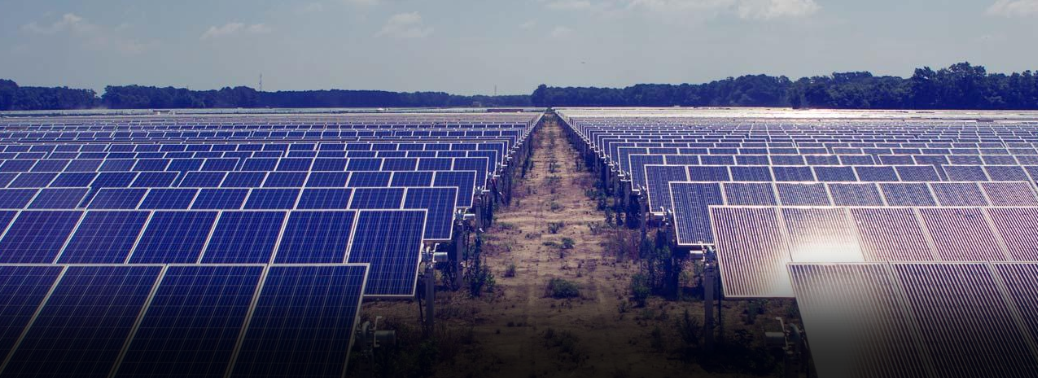
In News:
- The Cabinet Committee on Economic Affairs approved Phase-II of the Grid Connected Rooftop Solar Programme that aims to achieve a cumulative capacity of 40,000 MW from rooftop solar projects by 2022.
Explained:
- The phase-II is meant to achieve cumulative capacity of 40,000 megawatt (MW) from rooftop solar (RTS) projects by 2022.
- The Phase II programme provides for central financial assistance (for residential rooftop solar installations) up to 40% for rooftop systems up to 3kW and 20% for those with a capacity of 3-10kW.
- The second phase will also focus on increasing the involvement of the distribution companies (DISCOM). The total central financial support provided under the scheme would be ₹34,422 crore.
- Under phase-II programme, focus will be on increased involvement of Discoms. Performance-based incentives will be provided to Discoms, based on RTS capacity achieved in a financial year over and above the base capacity i.e. cumulative capacity achieved at the end of previous financial year
- As per the statement, the programmes will have substantial environment impact in terms of lowering CO2 emissions and has a potential to generate employment opportunity equivalent to 9.39 lakh job years for skilled and unskilled workers. And also for addition of 38GW capacity under Phase-II of the scheme by the year 2022.
Kisan Urja Suraksha evam Utthaan Mahabhiyan:
- In a separate decision, the Cabinet approved the launch of the Kisan Urja Suraksha evam Utthaan Mahabhiyan aimed at providing financial and water security to farmers.
- Through the scheme, farmers will be given financial assistance to set up solar panels in their unused or fallow land.
- The Kusum (Kisan Urja Suraksha evam Utthaan Mahabhiyan) scheme was announced in the Union Budget in 2018. The scheme provides for 5 lakh off grid solar pumps to begin with. The Indian farmer will effectively bear only 10 percent of cost for solarising his agricultural pump under a scheme unveiled in the Budget 2018-19.
- The government will be spending Rs 48,000 crore over 10 years as central financial assistance (CFA) on the Kusum scheme which aims to encourage the use of barren land for setting up solar power plants.
- A similar amount will have to be given by the states and the financing institutions towards Kusum, which is to be put up to the cabinet for approval.
Rural Housing Achieves Only 66 Percent Target
19, Jan 2019
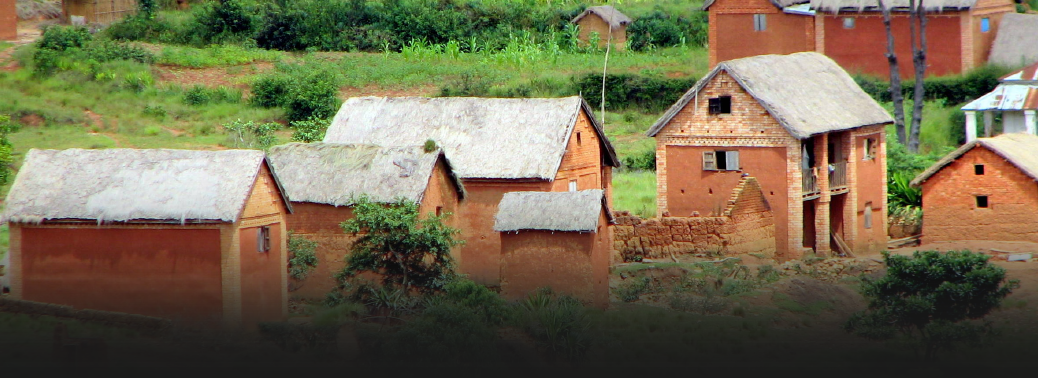
Context:
- States are delaying allotment of land for landless beneficiaries, says Centre .
Details:
- With two and a half months to go for the end of this financial year, the Pradhan Mantri Awas Yojana (Grameen) scheme to provide housing for the rural poor has achieved only 66% of its target to complete one crore houses.
- The Ministry of Rural Development still hopes to advance further towards the goal by the deadline of March-end, given that about 15 lakh homes have reached the late stages of construction with roofs ready to be added.
- Another 11 lakh homes have reached the lintel level, and may be completed in the next few months even if they do not meet the March 31 deadline. The scheme has been successful in reducing the average time of construction from 314 days to 114 days, according to an official statement.
- However, there has been little headway made with regard to one bloc of beneficiaries: the landless, who do not possess the land on which to construct the PMAY homes they are entitled to.In a letter to States dated January 4, the Ministry pointed out that only 12% of the 4.72 lakh identified landless beneficiaries had been provided land for house construction.
Laggard States:
- According to data provided in the letter, some of the most laggard States as of July 2018 were Maharashtra, which had provided land for only 890 of 1.39 lakh landless beneficiaries and Assam, which had provided land for 574 of 48,283 landless beneficiaries. In Bihar, only 55 out of 5,348 beneficiaries had been allotted land. West Bengal had not allotted land for even a single one of its 34,884 landless beneficiaries. “There are about 2.4 lakh left [to be sanctioned] in Bihar and about 30,000 each in Andhra Pradesh and Tamil Nadu,” said a senior official of the Ministry.
About PMAY (Grameen):
- Pradhan Mantri Awas yojana is a flagship scheme of government of India to eradicate poverty and ensure a life with Dignity as ensured in Article 21 of our constitution.
- It targets most of the rural population upto 75 percent and construct houses for better standard of living.
- Most of the rural folks live in kutcha house which is covered with a sheet on the top which is vulnerable to almost all the disasters even a normal increase in wind velocity.
- Under this scheme Pukka house will be constructed for all the family households
kaiga power station-1 creates a world record yet again
11, Dec 2018
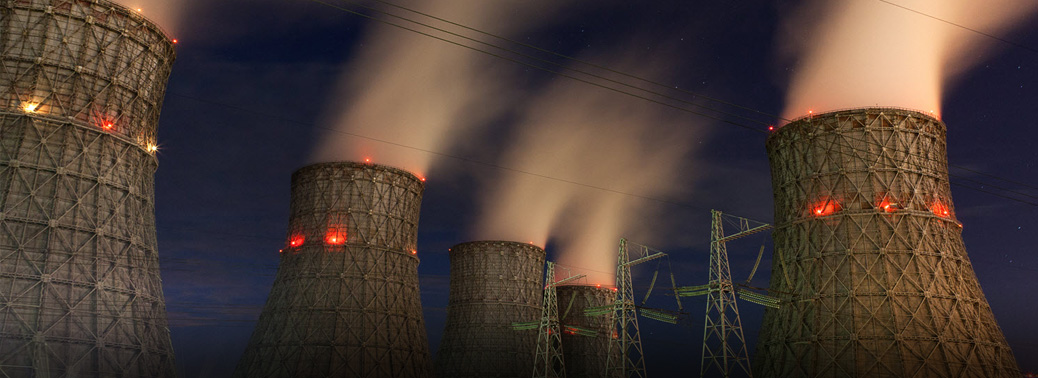
Context:
- Karnataka’s Kaiga has once again made the country proud by creating a world record for the longest uninterrupted operation for 941 days, thereby breaking the earlier record of 940 days by the United Kingdom.
Details:
- The achievement demonstrates that the nation’s capability in nuclear power generation technology of PHWR had fully matured and proved the excellence in design, construction, safety, quality and operation and maintenance practices of NPCIL. About Pressurized Heavy Water Reactors (PHWR). It uses natural uranium as fuel and heavy water as both moderator and coolant. The use of heavy water as the moderator is the key to the PHWR (pressurized heavy water reactor) system, enabling the use of natural uranium as the fuel (in the form of ceramic UO2), which means that it can be operated without expensive uranium enrichment facilities.
Union cabinet approves implementation of shahpurkandi dam
11, Dec 2018
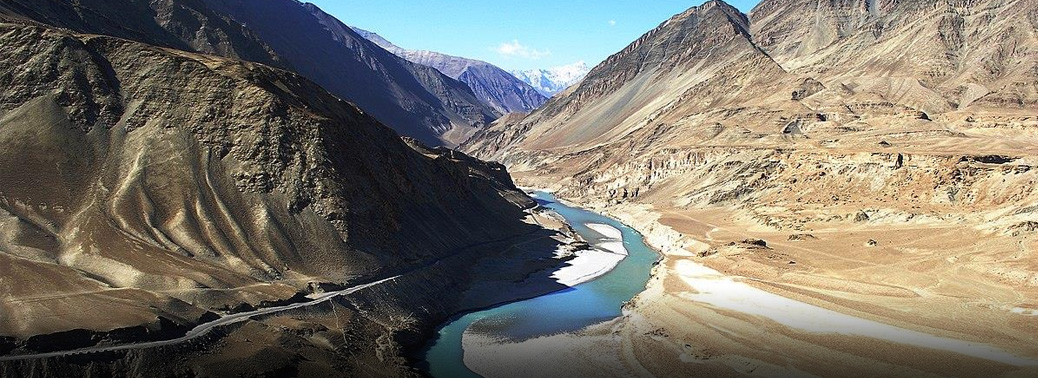
Why in News?
- Union Cabinet has approved implementation of Shahpurkandi Dam Project on river Ravi in Punjab.
- The project will be implemented by Punjab Government with central assistance of Rs. 485.38 crore (for irrigation component) over a five years period from 2019 to 2023.
- It will be completed by June 2022.
- Funding for central assistance will be made through National Bank for Agriculture and Rural Development (NABARD) under the existing system for funding of 99 Pradhan Mantri Krishi Sinchayee Yojana- Accelerated Irrigation Benefit Programme (PMKSY-AIBP) projects under Long Term Irrigation Fund (LTIF).
Significance of this Project:
- ShahpurKandi Dam project was proposed on River Ravi.
- This project will help minimizing some of water of River Ravi which at present is going waste through Madhopur Headworks downstream to Pakistan.
- It will create an irrigation potential of 5,000 hectares in Punjab and 32,173 hectares in Jammu & Kashmir on completion.
- Besides, Punjab will be able to generate 206 MW of hydropower.
Indus Waters Treaty:
- Indus Waters Treaty was signed between India and Pakistan in 1960 for sharing of Indus waters. According to this treaty, India got the full rights for utilization of waters of three eastern rivers namely Ravi, Beas and Satluj.
- Bilateral agreement was signed between Punjab and J&K in January 1979 for construction of RanjitSagar Dam (Thein Dam) and Shahpurkandi Dam by Punjab Government.
- RanjitSagar Dam was commissioned in August 2000.
Hunar Haat
12, Oct 2018
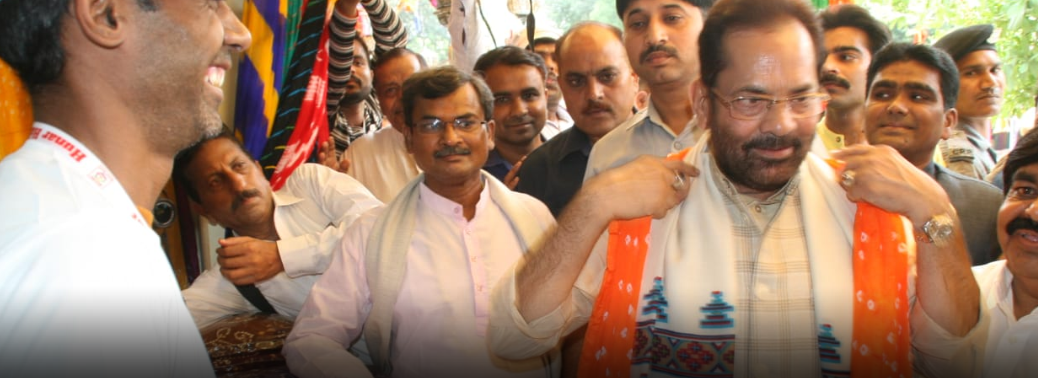
- Hunar haat comes under the Ministry of Minority affairs.
Hunar Haat components:
- To promote marketing and sale of products of individual Minority craftsmen/ artisans.
- To provide platform for the artisans and culinary expert belonging to minorities to showcase and sale their exquisitely crafted products and serve traditional cuisine.
- To support participation of minority craftsmen/ artisans in exhibition, trade fair, buyer seller meets etc.,
- To support organisations (Government organizations, Registered societies/ trusts/ companies, PSUs) for organising exhibitions at state/District level.
- To establish linkages with Dilli Haat, Handicraft Emporiums etc.,
- Financial norms: 100% funding will be done by the Ministry.
- Implementations of Hunar haat will be done through National Minorities development & finance corporation.
Government Invites Bids for International UDAN Flights
11, Oct 2018
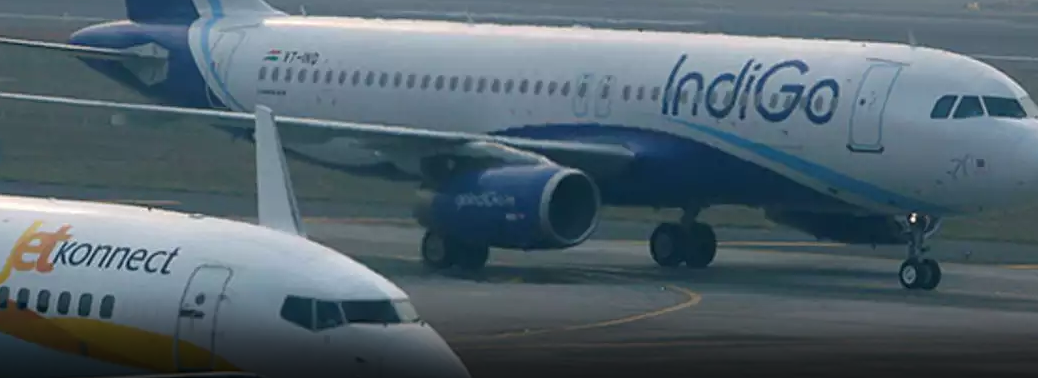
Why in News?
- The central government has invited proposals from interested air operators for the international version of its ‘Udan’ (Ude Desk Ka Aam Nagrik) scheme as it seeks to enhance air connectivity from India to select overseas destinations.
Background:
- This is despite the domestic format of the scheme failing to yield desired results with almost half of the routes approved in the first phase of the bidding for the scheme still to be launched.
- National airports operator AAI, which has been mandated to implement the international version of the Udan scheme, has invited “e-proposals (bids) from international bidders for selection of airlines under the International Air Connectivity Scheme, IACS Udan.
- The government, in its bid to make flying more affordable for masses, had in October 2016 announced the Udan scheme with airfares capped at ₹2,500 for a one-hour journey through subsidised ticket rates and to provide air connectivity to smaller towns.
- In the subsequent developments, five airlines were mandated to fly on 128 regional routes in the first phase of the bidding in March 2017, and 15 airlines on 325 regional routes, including those having chopper operations, in the second phase in January this year.
- The Airports Authority of India (AAI) is also the implementing agency for the domestic format of the regional connectivity scheme.
- The AAI has invited the bids on behalf of the civil aviation ministry and the Assam government, as per the notice.
International UDAN scheme:
- The central government had unveiled a draft scheme for extending the UDAN scheme to international circuits, with state governments identifying routes for the operations.
- The draft International Air Connectivity (IAC) scheme envisages to increase the international ticketing to 20 crores by 2027.
- As per the draft, the scheme is to be made operational only for states which demonstrate their commitment to implement and provide the requisite support for promoting operations under the scheme.
- The Assam had last year offered to provide ₹100 crore as viability gap funding towards extension of the scheme for international air connectivity from the state capital Guwahati.
- According to the draft scheme, state governments will identify the routes to be connected, and airline operators will assess demand on the identified routes and submit proposals for providing connectivity. Operations under the scheme will be permitted through fixed-wing aircraft only with more than 70 seats.
- The scheme has proposed to set up an International Air Connectivity Fund (IACF) — dedicated for providing subsidy support under the scheme. It will be created through the contributions of state governments.
MOU BETWEEN INDIA AND JAPAN
05, Sep 2018
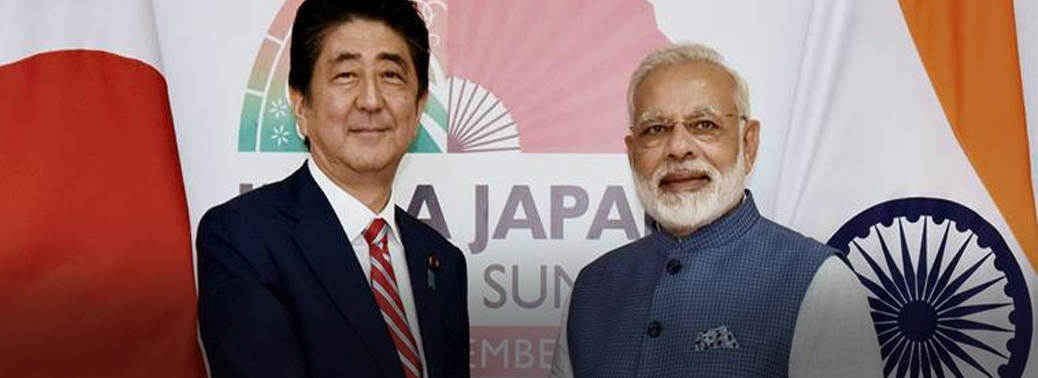
Japan International Cooperation Agency has signed an agreement with India to provide an Official Development Assistance (ODA) Rs 5,500 Crore loan, as the first tranche for the Mumbai-Ahmedabad High-Speed Rail (MAHSR) corridor, popularly
known as the bullet train project and to Kolkata East-West Metro Project
Bullet Train:
- Japan International Cooperation Agency (JICA) today announced it has signed an agreement with India to provide an Official Development Assistance (ODA) loan of 89,547 million Japanese Yen (around Rs 5,500 Crore) for bullet train
- The objective of the project is to develop a high-frequency mass transportation system by constructing the High-Speed Rail between Mumbai and Ahmedabad, using Japan’s Shinkansen technology (also known as the “Bullet Train”), thereby enhancing mobility in India and contributing to regional economic
- The first high speed train is scheduled to leave for its first run on 15 August
- The system will be designed to operate trains at a maximum speed of 350 kilometres per hour while operational speed would be 320 kilometres per hour. When traveling at 350 kilometres per hour a train will be able to travel end-to-end on the 508 kilometres line in 2 hours and 8 minutes. Currently, a train journey from Mumbai to Ahmedabad takes 7 hours.
Japan’s Shinkansen Technology:
- The Japanese Shinkansen is the first high-speed rail system which started its commercial operation in 1964 between Tokyo and Osaka. The system has several criteria which include safety, reliability and sustainability in its
- It has a stellar reputation of zero fatalities recorded throughout 53 years of operation in Japan. The Shinkansen operates based on the “Crash Avoidance” principle, which dictates a design eliminating any possibility of a crash
- The “Crash Avoidance” principle comprises of a dedicated high-speed rail track free of any level crossings and the Automatic Train Control (ATC) system which reliably safeguards against crashes by preventing the train from running at excessive
- The Shinkansen system is also designed to withstand natural disasters and abnormal weather
- It also has in place the deviation prevention measures to prevent train cars from deviating off the track and colliding with incoming trains or structures in the event that a train does derail.
- In the tropical country, where rain is frequent, the control centre will constantly monitor data from rain gauges installed along the lines to enforce speed restrictions when the rain level exceeds a predetermined
- The train system is very reliable. It has recorded less than one-minute average delay time per trip, therefore, ensuring punctuality for
- India become the first nation to import the iconic Shinkansen bullet trains, which will be a highlight of India’s infrastructure upgrade program.
NHSRCL:
- National High-Speed Rail Corporation Limited is implementing the project of high-speed train corridor between Ahmedabad and
- This Special Purpose Vehicle has been incorporated in 2012 as a subsidiary of Rail Vikas Nigam Limited which is a Mini-Ratna public sector enterprise of Government of
Advantages:
- High-speed connectivity: India is a vast country and the need to travel faster has become a necessity. While air transport can cater to such needs, the capacity that it offers simply cannot match that of the railways. While making incremental changes to improve existing infrastructure is desirable, it is equally important to adopt proven state-of-the-art technologies. The High-Speed Railway Line will be effective in meeting this
- Apart from diverting passengers from road and air, Bullet train generates a new class of passengers as well. With the average operating speeds higher than 250 km/h, High Speed Railways will make the distance of 500 km reachable in two
- Less stress on the Railways: The conventional Indian Railways lags substantially in extending, accelerating and modernizing its infrastructure and services. There is a serious need to segregate its passenger business from freight. With advent of bullet trains the stress on the railways would be
- Employment: The bullet train project is expected to create 4,000 direct job opportunities, along with 20,000 indirect jobs. 20,000 construction workers will also be employed during the set-up period of Ahmedabad-Mumbai bullet
- Urban expansion: New bullet train stations set to come up along the route will attract urban growth. This will again shift the pressure of urbanization from the existing urban centres.
- Environmental: In the backdrop of increasing concerns over environmental pollution and degradation of fossil fuels, energy-efficient and environmentally friendly, high-speed electric trains emit an eighth and a fifth of carbon dioxide as against automobiles and airplanes per passenger km,
- Enhanced Safety: High Speed Railways’ safety record is remarkable. With a 2,500-km network, providing high frequency, up to 14 trains per hour, the Shinkansen/Bullet train ever since its inception has maintained a unique record of no fatal
- Other avenues: The prime purpose of Bullet trains in India to provide convenience to commuters. However, it can also make a difference in freight transportation. Be it courier mail services, perishables, or other items, any fast alternative to overloaded lorries should be welcome for businesses as well as private
Cabinet clears Rs. 1,600 cr. Mission to map coasts
17, Aug 2018
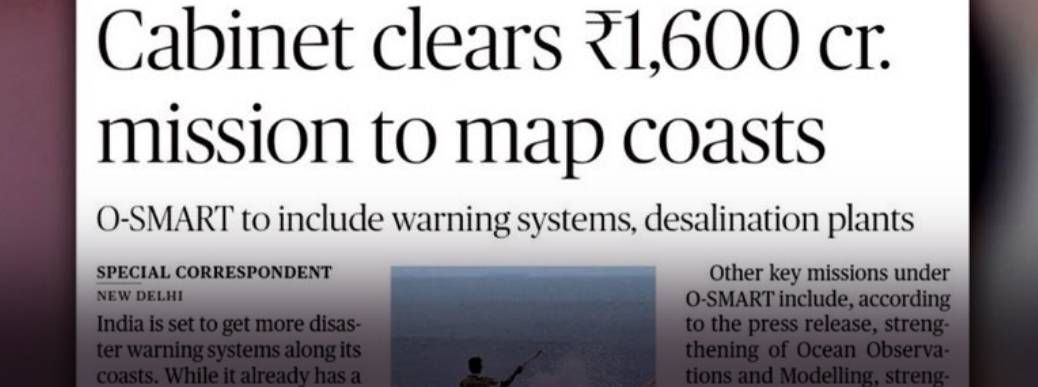
- The Cabinet Committee on Economic Affairs, chaired by the Prime Minister Shri Narendra Modi has given its approval for the umbrella scheme “Ocean Services, Technology, Observations, Resources Modelling and Science (O-SMART).
O-SMART:
- The scheme encompasses a total of 16 sub-projects addressing ocean development activities such as Services, Technology, Resources, Observations and Science.
- The services rendered under the O-SMART will provide economic benefits to a number of user communities in the coastal and ocean sectors, namely, fisheries, offshore industry, coastal states, Defence, Shipping, Ports etc.
- the ministry is proposing to continue the existing schemes in a focused way as a part of umbrella scheme of (O-SMART).
- Currently, five lakhs fishermen community are receiving this information daily through mobile which includes allocation of fish potential and local weather conditions in the coastal waters. This will help in reducing the search time for fishermen resulting savings in the fuel cost.
- Implementation of O-SMART will help in addressing issues relating to Sustainable Development Goal-14, which aims to conserve use of oceans, marine resources for sustainable development.
- This scheme (O-SMART) also provide necessary scientific and technological background required for implementation of various aspects of Blue Economy.
- The State of Art Early Warning Systems established under the O-SMART Scheme will help in effectively dealing with ocean disasters like Tsunami, storm surges.
- The technologies being developed under this Scheme will help in harnessing the vast ocean resources of both living and non-living resources from the seas around India.
- The important deliverables during the next 2 years envisage include
- Strengthening of Ocean Observations and Modelling.
- Strengthening of Ocean Services for Fishermen
- Setting up Marine Coastal Observatories for monitoring marine pollution in 2018
- Setting up Ocean Thermal Energy Conversion Plant (OTEC) in Kavaratti
- Acquisition of 2 Coastal Research Vessels for Coastal research
- Continuation of Ocean Survey and Exploration of Minerals and Living Resources
- Technology Development for Deep Ocean Mining- Deep Mining System and Manned Submersibles and
- Setting up Six Desalination Plants in Lakshadweep
Centre moots overseas UDAN
16, Aug 2018
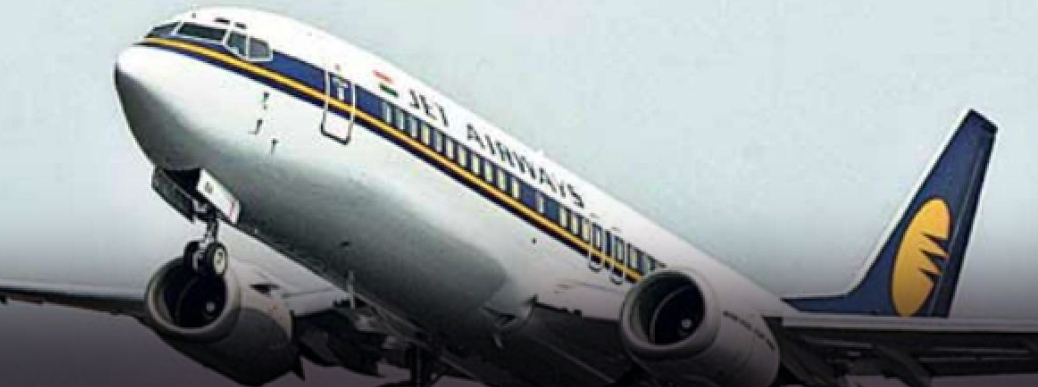
Why in news?
- The government is planning to extend its regional connectivity scheme Ude Desh Ka Aam Nagrik (UDAN) to overseas locations also as part of which it is evaluating plans to link Guwahati to Dhaka, Kathmandu, Kuala Lumpur, Yangon, Singapore and Bangkok.
Draft of the scheme:
- The scheme is designed for State governments that are keen to promote air connectivity on international routes identified by them and for which they are willing to provide subsidy to airlines.
- As per the draft, a State will identify international routes for which the Airports Authority of India (AAI) will determine a subsidy amount per seat and invite bids from domestic carriers. This will be followed by airlines submitting their proposals, which will include the routes they wish to connect as well as the subsidy needed by them.
- The airlines will bid on the percentage of flight capacity for which they require financial assistance, provided that the figure doesn’t exceed 60% of the flight capacity. The entity that quotes the lowest amount will be awarded subsidy for a particular route.
- However, the government will grant financial aid only for the actual number of passenger seats that are unsold, even if the airline had sought subsidy for a higher percentage of seating capacity at the time of bidding.
- An airline that is awarded a particular route will have exclusive rights to a subsidy on that route for a period of three years. The scheme is meant for domestic airlines.
- Only fixed wing aircraft with more than 70 seats can be operated under the scheme and airlines will have to conduct a minimum of three and a maximum of seven departures on a given route on three days in a week.
Key difference between Regional connectivity scheme and UDAN international:
- The key difference between this scheme and the regional connectivity scheme (RCS) for domestic routes is that there is no capping of fares. Under RCS, fares are capped at ₹2,500 for one hour of flight on a fixed wing aircraft in order to make air travel affordable, which was why the scheme was called Ude Desh Ka Aam Nagrik (UDAN).
UDAAN:
- The primary objective of Regional Connectivity Scheme – UDANis to facilitate regional air connectivity by making it affordable as stated in the RCS document released by the Ministry of Civil Aviation.
- With the launch of Regional Connectivity Scheme (RCS) UDAN (‘Ude Desh ka Aam Nagrik’) the aviation sector is set to get a big boost and tap huge market of middle-class flyers living in Tier-2 and Tier-3 cities. This is the first-of-its-kind scheme globally which harnesses the power of the markets to provide a public good.
FASTAG
25, Jul 2018
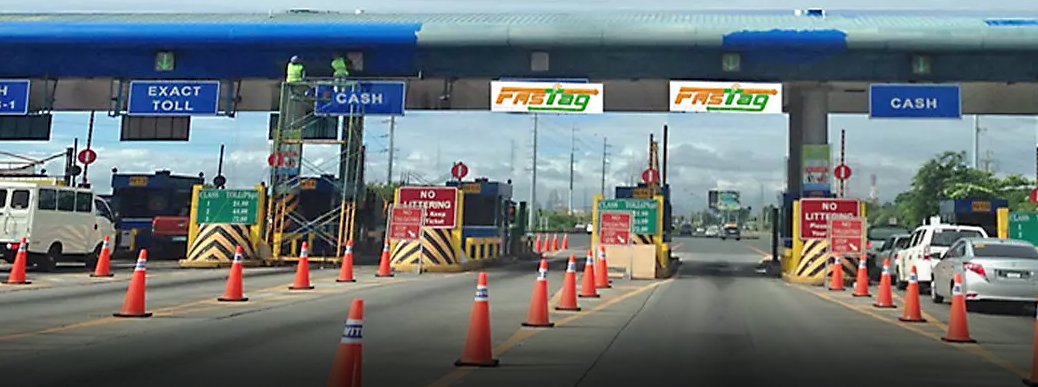
What is it ?
- To Regulate traffic in the tollgates, which has resulted in increasing cost of logistics, the Union Ministry of Road Transport and highways has launched FASTag.
How Does it work?
- It is one of the application of Radio-Frequency identification (RFID) Technology when a car crosses the tollgate, the car is affixed with a Tag on her windscreen which gets scanned automatically and no need to stop the car.
- The Tag is scanned by the workers om Electronic toll collection lanes and the toll tax is deduced from the respected bank that he/she provided.
- Finally a message is sent from the bank for acknowledgement.
Radio-Frequency Identification Technology:
- It is a wireless communication technology which incorporates use of electromagnetic coupling in a radio Frequency portion of the electromagnetic spectrum to uniquely identify an object, animal or person.
Radio-Frequency Identification Technology:
- It is a wireless communication technology which incorporates use of electromagnetic coupling in a radio Frequency portion of the electromagnetic spectrum to uniquely identify an object, animal or person.
- Works from low frequency (30Hz) to Ultra high Frequency upto micro-wave frequency (2.45 GHz)
Challenges:
Reader Collusion:
- When a signal from one RFID Reader interfere with other, Prevented using Anticollission Protocol.
Tag Collusion:
- When too many tags confuse RFID, this collision happens, especially while transmitting data at same time.
Applications:
It is increasingly used in internet of things, combining RFID with smartphone GPS can transfer sensor data including temperature, movement and location to be wirelessly transmitted used for people tracking from hospitals to track their patients to documents.
Health Care:
Used to reduce medical errors, meeting new standards, staff shortages and reducing costs can be done by RFID.
Government Library:
RFID Technology used to read barcodes used in library to browse multiple items simultaneously.
Global Mobility Summit
22, Jul 2018

- NITI Aayog, in collaboration with various ministries and industry partners, is organising ‘MOVE: Global Mobility Summit’ in New Delhi.
- This Summit will help drive Government’s goals for vehicle electrification, renewable energy integration and job growth and also speed up India’s transition to a clean energy economy.
- Participants include both government and non-government organisations.
The six tracks or themes for the Summit will focus on:
1. Asset Utilization and Services
2. Comprehensive Electrification
3. Alternative Energy
4. Reinventing Public Transit
5. Logistics and Goods Transport
6. Data Analytics and Mobility
Movement:
The Expo will feature exciting future technologies and cutting edge innovations which will shape the mobility paradigm, showcasing India’s push towards transformative mobility solutions. will offer a first-hand perspective on automotive solutions, upcoming trends in the logistics sector.






